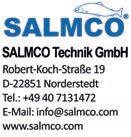
































Eurofish partners with stakeholders in its member countries and beyond executing projects for the development of fisheries and aquaculture.
Team up with us by contacting projects@eurofish.dk or visit eurofish.dk for more information.




































Eurofish partners with stakeholders in its member countries and beyond executing projects for the development of fisheries and aquaculture.
Team up with us by contacting projects@eurofish.dk or visit eurofish.dk for more information.

















Romania is modernising its fisheries and aquaculture sectors through legal reform, infrastructure investment, and environmental initiatives. Separate legislation for fisheries and aquaculture has been adopted, while climate change, economic pressures from the Ukraine war, and declining catches of species like rapa whelk present challenges. Strategic plans aim to boost production, particularly in bivalve and marine trout farming. Supported by €232 million in EU funding, Romania is improving port infrastructure, simplifying regulations, and promoting sustainability. Digitalisation, research, and marketing strategies are key to increasing production and domestic consumption in a sector undergoing significant transformation. Read more from page 22
The AlgaeProBANOS project, funded by Horizon Europe, promotes algae-based innovation across the Baltic and North Sea regions. It supports sustainable product development in food, feed, cosmetics, and textiles through six pilots and digital tools. The project includes life cycle and sustainability assessments, a wild harvesting framework, and the Algae Accelerator mentorship for startups. Key platforms include Blue Bio Match and the Algae Economist tool. Progress includes product prototypes and an algae farming dashboard. The initiative aims to establish a strong algae-based bioeconomy by 2050, aligned with EU environmental goals. Read more from page 19
Denmark’s largest mussel processor, Vilsund Blue, is operating at just 30 capacity due to a sharp decline in wild mussel catches, caused by environmental regulations and bureaucratic delays. Restrictions in the Limfjord, aimed at protecting eelgrass and habitats, limit access to fishing grounds. Although mussel dredging is legal and regulated, the industry is criticised while broader environmental issues go unaddressed. Vilsund Blue argues that mussel harvesting benefits ecosystems and is environmentally efficient. Imports and redirected products further threaten the business, which faces increasing pressure from complex and fragmented governance. Read more from page 44
Since Trump’s 2025 tariff announcements, US trade relations with Canada, Mexico, and China have sharply deteriorated. A 25 tariff on imports from Canada and Mexico disrupted the USMCA, risking recession in neighbouring economies and damaging US seafood supply chains. Canada’s seafood industry, heavily reliant on US exports, faces serious losses. Retaliatory tariffs were introduced, but Trump later partially suspended the measures. Globally, these protectionist moves threaten inflation, disrupt markets, and provoke countermeasures, especially from China and the EU. Tariff uncertainty endangers longstanding seafood trade and raises costs for US consumers and businesses. Read more from page 48
Ode, a Norwegian company, is reviving cod farming with improved technology, biological understanding, and infrastructure. Founded five years ago, Ode built a full value chain and began regular harvests in 2023, supplying markets in Europe, Asia, and the US. Advances include year-round egg production, improved feeds, and disease control. Cod farming offers advantages like steady supply and product uniformity. Drawing on lessons from salmon farming, the industry is cautiously expanding. Ode also focuses on consumer-friendly products. Despite challenges like climate change, the sector promises economic benefits for coastal communities and sustainable protein production. Read more from page 52
Royal Greenland has transformed the low-value summer cod fishery in Western Greenland through the Nutaaq concept, using fjord cages and a custom well-boat. Cod are kept in cages for up to six weeks to improve quality, then transported and processed under strict welfare conditions. The system reduces mortality, increases fillet quality, and meets demand in premium markets. With over 300 standardised cages and oxygen-monitored transport, Royal Greenland boosts profitability, offers better prices to fishers, and aims for full resource utilisation, inspired by Iceland’s model and supported by ongoing technology upgrades. Read more from page 54
6 International News
14 DanAqua and NordicRAS return to DanFish International in 2025
A united platform for fisheries and aquaculture
15 Seagriculture EU 2025, 17-19 June 2025, Rotterdam
Seaweed conference offers rich programme
16 XII ANFACO World Tuna Conference, 11-12 September 2025, Vigo
Global industry expected in Vigo
17 15th International Conference on Aquaculture, 2 to 4 April, Vukovar, Croatia
Climate change is a significant challenge for aquaculture
19 The AlgaeProBANOS project has developed a suite of digital tools and physical products
Significant advances in algae innovation
Romania
22 The Romanian fisheries and aquaculture sector
Navigating reform and resilience
25 The National Institute for Marine Research and Development “Grigore Antipa”
Transferring research outcomes to industry
28 Healthful and tasty products without artificial preserving agents
Revival of traditional recipes
31 The Research and Development Station for Fisheries Nucet
A national cornerstone in Romanian freshwater aquaculture
34 Romanian aquaculture adapts and diversifies to confront structural and economic challenges
Resilience and renewal in Romanian aquaculture





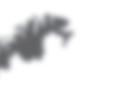




























































































36 Research and Development Institute for Aquatic Ecology, Fisheries, and Aquaculture, Galaţi
Providing the science behind the policy





Pastravul din Tara Ta expands trout production Plans to on-grow fish in the Black Sea
Danube Delta National Institute for Research and Development, Tulcea
Studying ways to increase the delta’s resilience


Denmark’s main shellfish processor clobbered by drastic fall in mussel supply Fighting on several fronts








48 Trump’s tariff policy threatens the global economy A price surge for fish and seafood?
Norway starts to grow cod in sea cages again Ode bets big on farmed cod




























Using technology to improve the value of summer cod in Western Greenland How do we get more value out of our seafood?











Imprint, List of Advertisers

Scan the QR code to access the Eurofish Magazine website (www.eurofishmagazine. com), where you can also sign up to receive the Eurofish Magazine newsletter.

Estonia is joining Finland and Sweden in appealing to the European Commission for permission to sell seal products within the European Union, ERR News reports. Under current EU regulations, the trade of seal-derived products is prohibited, except for indigenous communities. Estonia is challenging this rule, arguing it unfairly excludes coastal populations like those on Kihnu Island. Herki Tuus, head of the fisheries department at the Ministry of Regional Development and Agriculture, said grey seal numbers in Estonian waters have grown significantly and are impacting coastal fisheries. The seal population is estimated at around 7,000 and consumes roughly 9,000 tonnes of fish annually—nearly as much as Estonia’s annual fishing catches of 12,000 tonnes.
While stressing that seals must remain part of the marine

ecosystem, Tuus said the optimal population could be maintained even at half the current size. A joint letter from the Estonian, Finnish, and Swedish ministers was sent to the Commission this week, calling for a review of
the ban, especially as the EU is already reassessing the regulation’s relevance. Esta Tamm, head of the Association of Fisheries of Gulf of Liivi, also sent an appeal. She believes that if seal products could be marketed, interest in
seal hunting would rise. According to Tamm, nearly all parts of the seal—meat, fat, and skin— can be utilised, much like in Norway. The Estonian ministry hopes the European Commission will respond before summer.
Five Belgian fishing vessels were subjected to stringent and unexpected inspections by UK maritime authorities, prompting strong reactions from the fishing community and concern from the Flemish government. The inspections, which took place in British waters, involved forcing vessels to divert to UK ports, seizing black boxes, and detaining captains—actions described by Belgian fishers as disruptive and economically damaging. One of the vessels, the Z-26, was operating 37 nautical miles off the western coast of Great Britain in the Bristol Channel when it was intercepted. According to Captain Clancy Snauwaert, authorities provided no clear reason for the operation, merely stating the need for “a more thorough examination.”
The vessel was then ordered to the port of Newlyn in southwest England, where its black box was confiscated. This forced the crew to abandon operations and return to Zeebrugge, resulting in an estimated economic loss of €40,000.
Flemish Minister for Fisheries, Hilde Crevits, met with affected crews in Zeebrugge. She condemned the actions as “unprecedented and aggressive”, voicing her deep concern and pledging to raise the issue with both the UK government and the European Commission. While inspections at sea are not uncommon, they are typically conducted with minimal disruption. The unusual severity of these controls has sparked questions, especially given ongoing EU–UK negotiations on fishing quotas. Minister Crevits refrained from speculating on the motives behind the UK’s actions but emphasised the need for

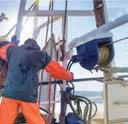

Belgian fishers were subjected to unusually rigorous inspections when fishing in UK waters recently, provoking reactions from the fishing industry and the Flemish government.
clarity and diplomatic engagement to protect the interests of Belgian fishers operating legally in shared waters.

KOA Biotech, a Barcelonabased biotech startup focused on aquaculture health, has secured €2 million in funding to scale its early pathogen detection technology. The round was led by Swanlaab Innvierte Agrifood-Tech, with participation from international impact investors Fund-F (Austria) and FABER (Portugal). Founded by Sira Mogas during her PhD in biomedicine, KOA Biotech emerged from a desire to build a purpose-driven company addressing a clear market need. Initially unfamiliar with the aquaculture sector, Ms Mogas identified a critical pain point: bacterial infections in fish farms, which cause up to 30 production losses globally—estimated at over $6 billion annually.
KOA’s core innovation lies in its genetically engineered biosensors, designed to detect bacterial infections in water before outbreaks occur. These in-house developed sensors are paired


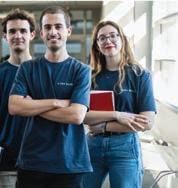

The team at KOA Biotech, a company that can developed genetically engineered biosensors to detect bacterial infections in the water of fish farms before it becomes an outbreak.
with hardware readers and machine learning algorithms that analyze response patterns and issue preventive alerts. The solution enables early action, reducing fish mortality, antibiotic usage, and economic losses, while improving sustainability and real-time health monitoring.
Spain’s Minister of Agriculture, Fisheries and Food, Luis Planas, has highlighted the strategic importance of the EU-Mercosur agreement as a major opportunity to diversify Spanish exports amid mounting U.S. trade tariffs. Speaking on Thursday, Mr Planas called for a coordinated and proportional response from the European Union to counter the impact of protectionist measures implemented by the U.S., particularly
under the Trump administration. Acknowledging the challenges posed by escalating tariffs, Mr Planas described the current period as “complicated,” and stressed the need for unity and effective action across EU member states. Tariffs represent a serious obstacle to the economic future of both the EU and Spain, he stated, cautioning against overreaction while recognizing the urgency to reduce dependency on traditional
The startup offers its system via a “Sensing as a Service” model, providing equipment and consumables on a subscription basis, along with cloud-based data access. Nora Alonso, General Partner at Swanlaab, highlighted KOA as an example of Spain’s potential to
lead in agrifood-tech innovation by focusing on research and attracting international capital. With the new funding, KOA plans to accelerate product development, expand its commercial strategy, and solidify its position as a key player in sustainable aquaculture technology.
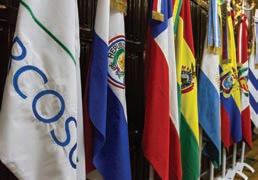
Spain sees the EU-Mercosur trade agreement as a way of mitigating the impacts of tariffs imposed by the United States.
markets such as the United States.
Mr Planas reiterated his government’s support for Spain’s agrifood sector, which has been one of the most heavily affected by U.S. tariffs. He emphasised that

while Spain remains a strong advocate of transatlantic relations, recent U.S. measures can be seen as “unfriendly.” As part of Spain’s export diversification strategy, Mr Planas pointed to Mercosur—the South American trade bloc comprising Brazil,
Argentina, Uruguay, and Paraguay—as the cornerstone of new commercial efforts. The minister also underlined ongoing initiatives, including negotiations with India and upcoming diplomatic and trade missions to Vietnam and China, aimed at
On 29 April, the government approved amendments to the rules on granting State and European Union support for rural development and fisheries, which simplify the conditions for receiving funding from the European Agricultural Fund for Rural Development (EAFRD) and the European Maritime,
Fisheries and Aquaculture Fund (EMFAF). These amendments are aimed at improving access to finance for beneficiaries and reducing the administrative burden. From now on, applicants will also be able to receive funding on payment accounts opened with payment service providers, not only with credit institutions.
strengthening Spain’s presence in Asia.
These steps, Mr Planas affirmed, are designed to ensure Spain's long-term resilience against the against the rising tide of global protectionism.
This provides greater flexibility and is in line with modern financial services regulation in Latvia. The provisions on the monitoring period for financial leasing have also been revised. Depending on the duration of the lease, the monitoring period may be reduced to four or three years, thus reducing the administrative
burden for beneficiaries. The amendments also provide that rural development measures or projects approved by local action groups will be eligible for an advance of up to 40 of the aid amount without a guarantee from a credit institution, if the request is considered justified by the Rural Support Service.
Fifty Danish fishermen have voluntarily installed surveillance cameras on their fishing vessels in a pioneering transparency initiative. The programme, led by the Danish Fisheries Association, aims to document catches and ensure compliance with fishing rules without mandating surveillance. Officials say this move— believed to be the first of its kind in Europe at this scale—will bolster sustainable fisheries management through cooperation rather than coercion. Most of the Kattegat’s Norway lobster fishers are now carrying cameras at sea under the voluntary scheme. The footage allows the Danish Fisheries Agency to remotely monitor catches and verify that regulations are followed. It clearly shows that voluntary measures work. Instead of forcing monitoring on
the fishery, the way forward is to cooperate with the industry. Fishers are responsible and have nothing to hide—they are happy to participate as long as there are good incentives and fair conditions, said Svend-Erik Andersen, chairman of the Danish Fisheries Association to Ritzau. The association has pushed for a voluntary approach since 2019, after fishermen reported that earlier mandatory camera trials felt intrusive and harmed morale. A 2020 university study likewise found the forced monitoring had negative psychological effects on crews.
Denmark’s move positions it at the forefront of fisheries transparency in Europe. By opting in to digital monitoring, Danish fishers are aligning with broader EU efforts to modernise fishery controls. The

in Europe.
European Union’s updated fisheries regulation calls for greater use of electronic monitoring— including onboard cameras—to strengthen compliance with sustainability rules. While several EU countries debate mandatory camera requirements, Denmark’s
voluntary uptake stands out as an industry-led model. Observers say the Danish example could inform policy across Europe, demonstrating how collaboration and incentives can achieve accountability in fisheries management without alienating those working at sea.
A coalition of Icelandic tourism stakeholders has proposed designating the Ísafjarðardjúp fjord in the Westfjords as a whale sanctuary. The move, led by the Icelandic Whale Watching Association (Icewhale) and the Icelandic Travel Industry Association, responds to plans for minke whale hunting in the area, which they say conflict with the growing whale watching industry. The proposal was submitted to the Minister for Food, Agriculture and Fisheries and builds on a 2017 regulation that created similar sanctuaries in Faxaflói, Skjálfandi, and Steingrímsfjörður. Supporters argue that the same protection
should be extended to Ísafjarðardjúp, pointing to both environmental and economic factors.
Sigursteinn Másson of Icewhale highlighted the importance of whale watching to the region’s tourism economy. He warned that allowing hunting in the same waters could undermine the industry’s growth. He also
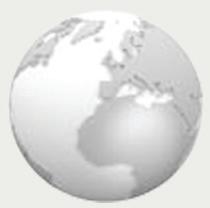
questioned the practicality of hunting minke whales locally, noting that sightings in the fjord are infrequent. The municipal council of Ísafjarðarbær has backed the idea, proposing a seasonal sanctuary from May to September. Stakeholders are calling for dialogue and decisions that prioritise the long-term interests of the local community.
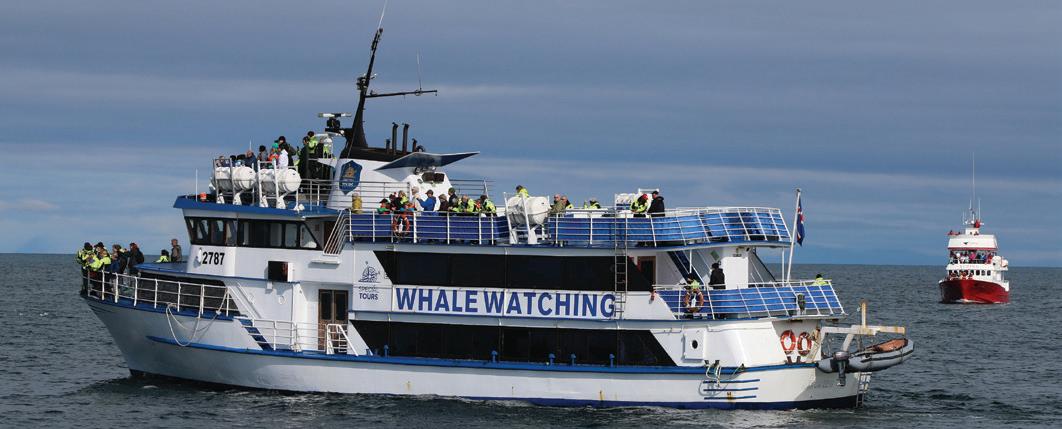
Whale watching organisations and the travel industry are urging the fisheries ministry in Iceland to designate a fjord in the Westfjords as a whale sanctuary.
The fishing profession in Latvia is slowly disappearing not only for environmental and regulatory reasons, but mainly for economic reasons. In an interview with Neatkariga, Juris Petersons, head of the fishing company GRIFS, explains that the sector lacks stability, job security, and prospects. Although
the vessels have the technical capacity to catch 6,000 tonnes per year, fishermen are only allowed to catch about 1,900 tonnes, so work is only available for six months. Wages range from €2,500 to €3,500 per month, but many experienced fishermen have long since moved to Scotland, where
wages can reach up to £7,000. The competitiveness of the industry is also declining due to restrictions on European funds—aid does not match real needs, such as for replacing engines or hydraulics. In addition, fish prices on the market are low—sprats cost 40-50 cents/ kg, herring 30-50 cents, and the
fish itself only accounts for around 4 of the price of a can of sprats. At the same time, vessels are becoming more technologically sophisticated and the demands on fishermen are increasing. Young people are no longer choosing this route, while existing fishermen are ageing and leaving the profession.


EPTEMBER 22-25











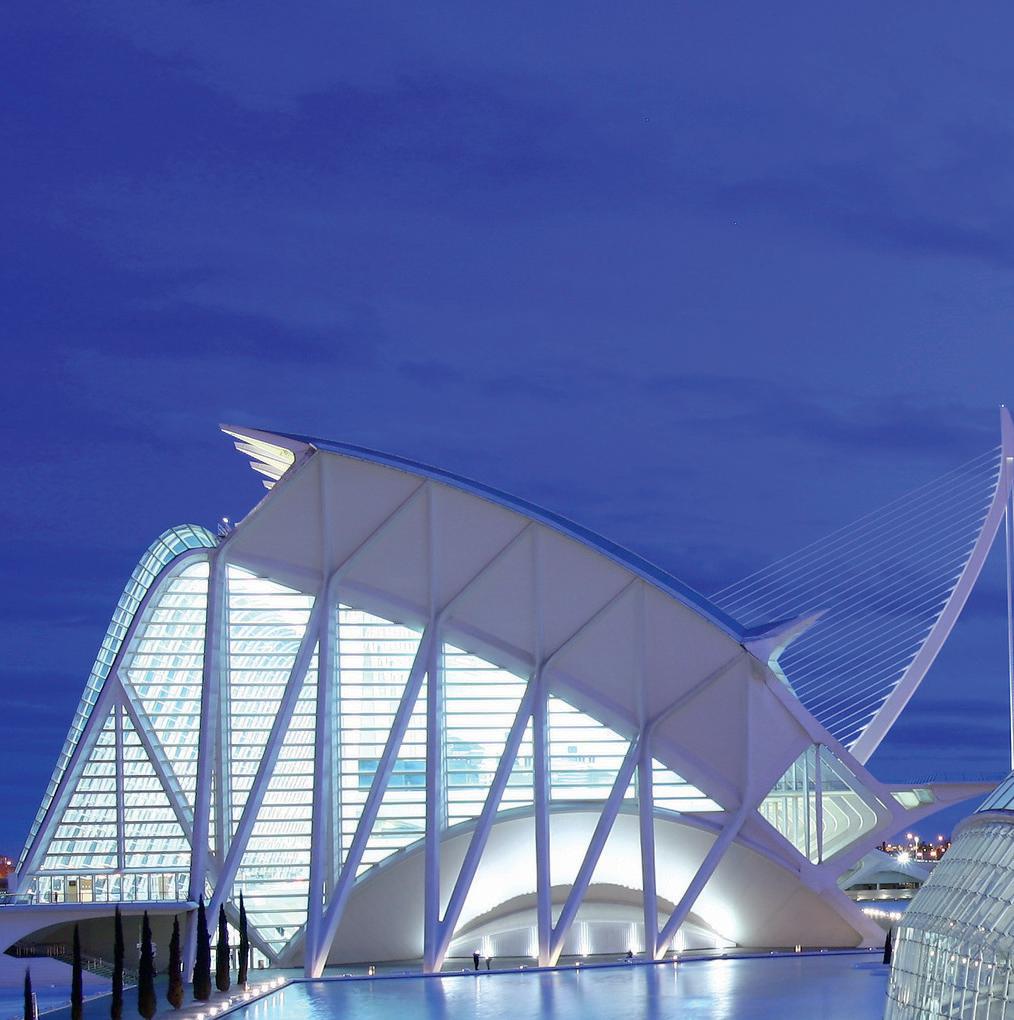


























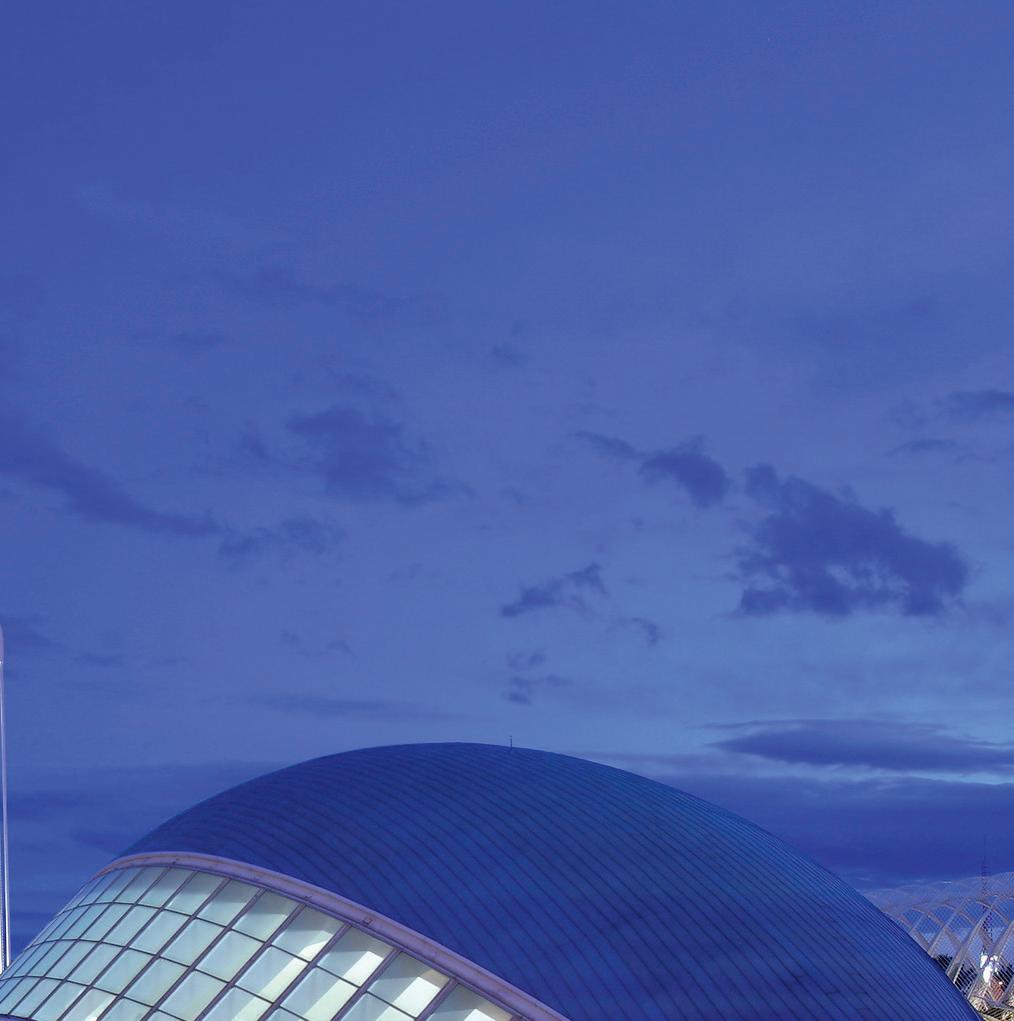


















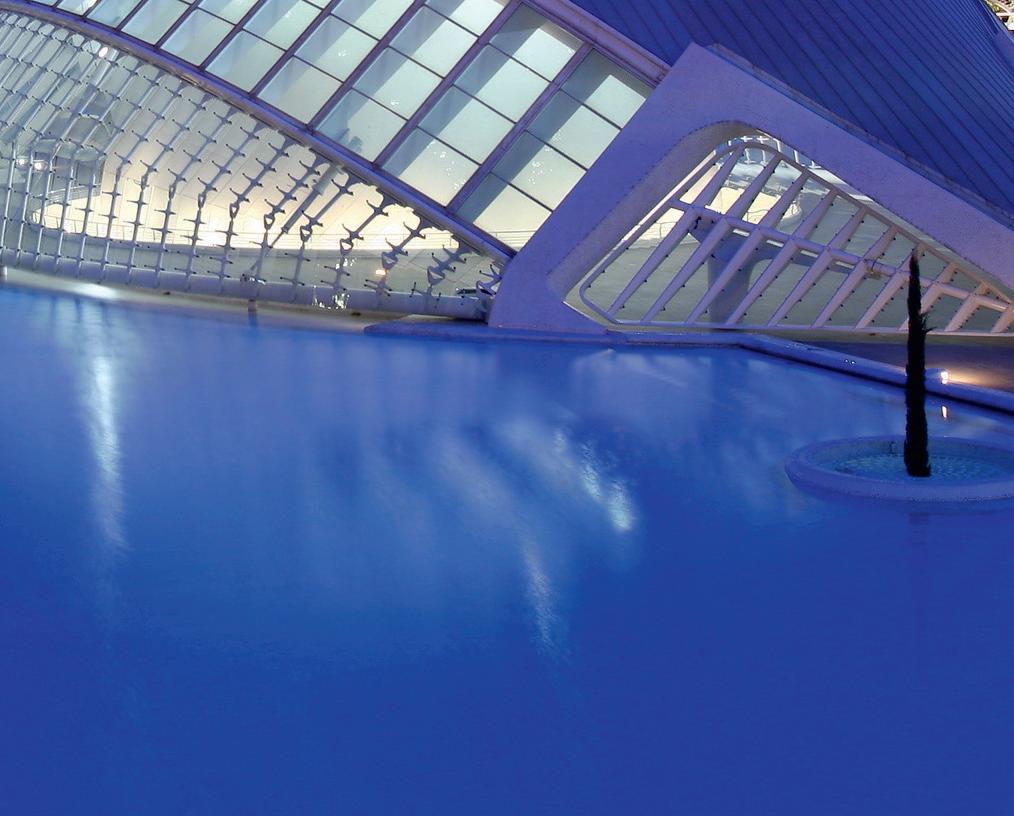







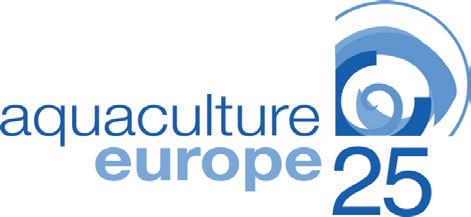







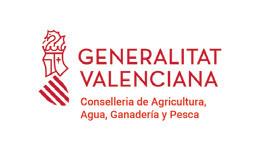


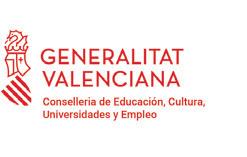

Latvia’s aquaculture sector is experiencing a significant transformation with the establishment of the TOME Aquaculture Centre. Developed by the Institute of Food Safety, Animal Health and Environment (BIOR) and supported by EU funding, the centre aims to bridge the gap between research and industry, providing expert guidance to modernize fish farming practices across the region. Completed in late 2023, the TOME Centre began operations in May 2024, focusing on sustainability and innovation. It has already attracted over 100 participants from 40 aquaculture farms across Europe through its
international seminars and collaborative workshops. The facility offers advanced technologies and expertise in farming various species, including carp, burbot, and pikeperch. Its research extends to areas such as European catfish breeding and saltwater Recirculating Aquaculture Systems (RAS). BIOR’s experience in rearing juvenile fish for restocking programs, including Baltic salmon and sea trout, has further established TOME’s reputation as a regional leader. Latvian companies like Eko ilde, Skrunda, and Nag i have already benefited from TOME’s resources, attending seminars on critical topics like fish health,
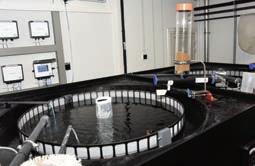
The TOME Aquaculture Centre studies the technologies and processes needed to optimally farm a variety of fish species.
welfare, and biosecurity. As the TOME Aquaculture Centre continues to expand its reach, it is
expected to shape a more innovative and resilient aquaculture industry in Latvia and beyond.
Portugal’s sardine fishery is on track to receive Marine Stewardship Council (MSC) certification by summer 2025, a significant step forward in the country’s commitment to sustainable fisheries and international market competitiveness. According to Cláudia Monteiro de Aguiar, Secretary of State for Fisheries, the MSC certification—expected between June and July—will affirm the fishery’s alignment with international sustainability standards. The certification is also expected to bring commercial benefits, including stronger positioning in European markets where eco-labels increasingly influence consumer choices. The announcement was made during the signing of sardine supply contracts between the purse seine fleet Propeixe and Portugal’s national canning industry, marking the second year of formal collaboration between the harvesting and processing sectors. The
number of processing companies involved has increased to eight, reflecting growing industry confidence in the partnership. The fixed-price contracts offer increased price stability and revenue predictability for fishing operators, while also supporting secure supply for processors.
As part of the 2025 management plan, Portugal has secured 66.5 of the total Iberian sardine quota—an increase of approximately 5,000 tonnes, or 16 more than the previous year. This quota expansion is expected to extend fishing seasons and enhance economic stability for the fleet. The certification is also expected to enhance the competitiveness of Portuguese sardines in European and global markets. Currently, the only MSC-certified sardine fishery in Europe is located in the United Kingdom. Achieving certification would
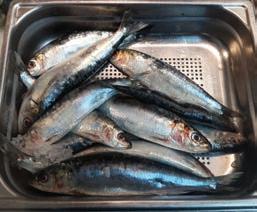
The anticipated MSC certification of Portugal’s sardine fishery is expected to boost the fishery’s environmental credentials and improve sales.
place Portugal in a stronger position in terms of traceability, consumer trust, and added value throughout the supply chain. With improvements in quota management, strengthened vertical integration between
harvesting and processing, and an upcoming sustainability certification, Portugal’s sardine sector is positioning itself for long-term resilience and growth in a market increasingly shaped by environmental credentials.

The European Parliament’s Committee on Fisheries has approved a new protocol under the EU’s Sustainable Fisheries Partnership Agreement (SFPA) with Greenland, allowing EU vessels to fish in Greenlandic waters from 2025 to 2030. The agreement grants EU vessels access to key species including cod, halibut, redfish, and shrimp. In return, the EU will pay Greenland €17.3 million annually—€14.1 million for access rights and €3.2 million to support Greenland’s fisheries sector. EU vessel owners will also pay separate fees, potentially totalling €4.5 million per year, with rates increasing every two years. The protocol permits EU vessels to
catch upto 30,906 tonnes annually, including 13,000 tonnes of capelin (if reopened), 6,675 tonnes of halibut, 6,581 tonnes of prawn, 2,100 tonnes of redfish, and 2,050 tonnes of cod. It includes provisions on by-catch limits, scientific collaboration, monitoring, and protection of fishing zones. Fisheries Committee MEPs endorsed the agreement with 23 votes in favour, one against, and two abstentions. A related resolution emphasized the benefits to Greenland’s economy from increased EU contributions and called for precautionary, science-based management of fish stocks. MEPs also stressed the importance of minimizing seabed damage
































The EU has approved a new protocol with Greenland allowing EU vessels to catch over thirty thousand tonnes of fish annually.
from trawling to preserve the marine environment. The protocol is seen as a key part of the EU’s post-Brexit fisheries governance, particularly in Arctic waters shared with Norway and other regional partners. The
agreement also reinforces diplomatic ties with Greenland, a selfgoverning territory of Denmark where fisheries account for over 90 of exports. To take effect, the protocol must still be approved by the full European Parliament.




































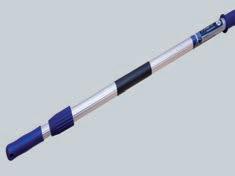


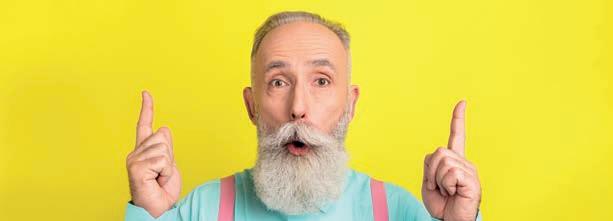




Salmon prices in the United States have collapsed to levels not seen in years with fresh whole Norwegian salmon recently trading 36 below the three-year average price. Salmon from both aquaculture and wild fisheries is flooding the U.S. market. Norway’s farmed salmon exports to the U.S. jumped 56 in volume in Q1 2025 compared to a year earlier, as producers rushed shipments. One exporter described the situation as “absolutely terrible,” noting that prices fell by about NOK20 (~$1.92) per kilo in a week amid “a lot of fish, a lot of supply”. Other salmon farming nations—from Chile to Scotland—also ramped up output, adding to the oversupply. Moreover, Alaska forecasts a strong sockeye salmon season (34.8 million fish in Bristol Bay,
~50 above the long-term average), which could further depress prices when summer harvests hit the market.
Market anxiety is compounded by new U.S. import tariffs introduced in late March 2025. Washington imposed a 10 tariff on farmed salmon imports from key suppliers like Chile, the U.K., and Iceland, and a 15 tariff on Norwegian salmon. The looming duties prompted many importers to frontload shipments before the April effective date, temporarily swelling inventories. In fact, some of the influx has been diverted into cold storage as imports outpaced immediate demand. For producers and exporters, the fallout is significant. Many are harvesting larger fish early to manage biomass, despite

To evade import tariffs salmon producers brought forward shipments to the US contributing to a glut of fish on the market and a consequent fall in prices.
weak prices. U.S. distributors face mounting inventories and uncertain margins, even as lower prices drive promotional activity at retail.
Industry analysts warn that unless
supply is reined in or demand picks up, salmon prices may remain depressed well into 2025, pressuring everyone from Alaskan fishers to global aquaculture giants.
In a decisive move to safeguard the Mediterranean red coral (Corallium rubrum), the Sardinian regional government has implemented stringent fishing regulations effective from 2025. These measures aim to curb overexploitation and ensure the sustainable management of this valuable marine resource. Under the new regulations, red coral may only be harvested by licensed professional divers operating at depths greater than 80 meters, with the fishing season limited to the period between May 15 and October 15. The number of licenses issued annually is capped at 12, to limit fishing pressure on coral populations. Additionally, landing and transhipment of red coral catches are only allowed only at designated landing ports including Santa Teresa di Gallura, Castelsardo, Alghero, Bosa, Oristano, Portoscuso, Calasetta, Villasimius, and Arbatax.
To further protect juvenile corals, the regulations stipulate that if more than 25 of a catch comprises specimens with a base diameter under 7 millimeters, fishing activities in that area will be suspended automatically and without exception. This measure is designed to prevent the depletion of young coral colonies and promote regeneration. The use of traditional hand tools, such as the pickaxe, remains permitted, while modern equipment like remotely operated vehicles (ROVs) is prohibited to minimize environmental impact. Licensed divers are required to pay an annual fee of €516.50 and must adhere to strict monitoring protocols to ensure compliance with the new rules. These comprehensive regulations reflect Sardinia’s commitment to preserving its marine biodiversity and the ecological integrity of its
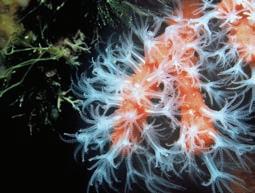
Sardinia’s regional government introduces stricter regulations on the harvesting of Mediterranean red coral to enhance protection of the species.
coastal waters. By enforcing controlled harvesting practices, the region aims to balance economic interests with environmental
stewardship, ensuring that red coral remains a thriving component of the Mediterranean ecosystem for generations to come.

Traditionally, fishing has been considered a male-dominated profession. However, women play a vital—though often invisible— role in the sector. While some European countries have formally recognized this type of contribution, it remains undervalued and under the radar in many places. To address this imbalance, the World Wide Fund for Nature (WWF) has, for the first time, brought together women in fisheries from eight Mediterranean countries for a networking and knowledge-sharing event held in Split, Croatia. WWF has gathered women from Croatia, Tunisia, Turkey, Greece, Spain, Italy, and beyond—united by the fact that fishing is not just their livelihood, but their calling. These women participated in the Women in Fisheries conference on 7 and 8 April 2025, where they shared their stories and experiences in the industry.
The aim was to inspire and support one another while also raising awareness about the essential work they do.
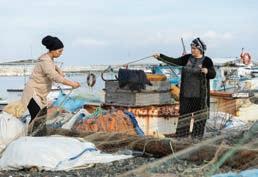
Women play a vital though often unacknowledged role in the fisheries sector, something that the recent Women in Fisheries conference in Split, Croatia sought to highlight. Pictured, Turkish women repairing fishing nets in the port of Hatay.
of women in the fishing industry. The photographs were taken by internationally renowned documentary photographer Ivana Vareško, whose work has appeared in Vogue, Harper’s Bazaar, and other leading magazines. She captured the women in their natural working environments, portraying the deep meaning of their craft—fishing is more than a job; it’s a vocation.
The extreme meteorological phenomena recorded in the last ten years in the southeastern part of Europe, primarily manifested by exceptionally high temperatures and repeated droughts, have significantly affected freshwater fish farming in Romania. The drought of the past four years in the main cyprinid production areas, namely the northeast and southeast, has resulted in a dramatic decrease in the production of cyprinids raised in polyculture. The cyprinid production sold in 2015 was 9,070 tonnes, with an additional 1,880 tonnes imported. In 2023, the national sold production was 7,129 tonnes, and another 4,613 tonnes were imported, indicating a slight increase in consumption but a severe crisis in domestic production. As a result of the cascading crises over the last five years,
Despite the crucial role women play in fisheries, their voices are rarely heard. They are seldom consulted when decisions are made. That is precisely why WWF has brought together women from across the Mediterranean— to help them connect, empower one another, and raise their visibility. We believe this experience will be important not only for their futures, but also for the future of sustainable fishing, said Kora Dvorski from WWF Adria. As part of the conference, women fishers from around the Mediterranean visited the Split fish market, where a photo exhibition titled The Invisible Strength of Fisheries was displayed. This exhibition highlighted the role culminating in a lack of access to water sources and an unexpected rise in energy prices, alongside the absence of coherent and consistent measures to maintain the economic viability of the sector, many pond farms—some of which are highly productive—are on the brink of dereliction, affecting also the biodiversity associated with this type of aquaculture.
The Romanian aquaculture producers’ organisations are questioning the inadequate response of both the European Commission and national authorities in addressing such events in aquaculture compared to the support consistently allocated to other forms of agriculture. This is especially galling when aquaculture production in the EU, as in Romania, has remained stagnant since
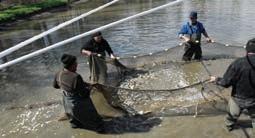
Climate-change-induced high water temperatures and droughts are negatively affecting pond fish farmers’ production in Romania.
2000, leading to an increasing dependence on imports. Professional organisations in aquaculture proposed measures such as establishing an insurance scheme, and classifying aquaculture as the second most important sector for water resource allocation during drought alongside other animal
farming operations; however, many of these suggestions are yet to be addressed by the multiple authorities regulating aquaculture. A side effect of this deep crisis will be the capacity of carp farms to apply for the EMFAF 2021-2027, which only began its call for applications in early April of this year.
DanAqua and NordicRAS return to DanFish International in 2025








When DanFish International opens its doors for the 29th time from 7–9 October 2025 at Aalborg Congress & Culture Center (AKKC), it will not only host one of the world’s leading fishing exhibitions. It will also mark the welcome return of the aquaculture exhibition DanAqua and the NordicRAS conference.
For years, DanFish International has attracted thousands of stakeholders from across the global fishing industry. With over 400 exhibitors from more than 30 countries and 12,000 visitors from over 50 nations, the exhibition is a key meeting place for networking, business, and professional insight. In 2025, the exhibition will be even more relevant and ambitious as DanAqua returns as an integrated part of the programme after an eightyear break—coinciding with the comeback of the NordicRAS conference to Aalborg.
DanAqua targets the rapidly growing aquaculture sector and brings together producers, suppliers, and decision-makers working with everything from feed and breeding to technology and water treatment. By integrating DanAqua more closely with DanFish, the exhibition creates a stronger platform for synergy across the fishing, aquaculture, and maritime industries. As part of DanAqua, the NordicRAS conference will once again take place, having previously attracted strong interest from researchers, producers, and investors alike. Focusing on recirculating aquaculture systems (RAS), the conference gathers leading experts and players from the industry for two intense days of knowledge sharing and networking during DanFish.
Organised by DTU Aqua, the NordicRAS conference features a broad programme of presentations, panel debates, and case studies covering everything from technological innovations to economic and regulatory perspectives. DanFish and DanAqua provide the perfect backdrop for this conference, as they bring the entire value chain together in one place. While NordicRAS will be a closed conference for invited participants, the DanAqua exhibition area will be open to all DanFish attendees, featuring up to 30 stands exclusively dedicated to aquaculture and the latest technologies and solutions in the farming sector.
Sustainability will be a growing focus throughout the exhibition. From green technologies and climate-friendly operations to sustainable feed production and CO2 reduction in transport, DanFish, DanAqua, and NordicRAS will all support the sustainable innovation shaping the industry. AKKC itself has worked intensively with sustainability in recent years and is certified under both DNV’s Sustainable Development Goals certification and the international ISO 20121 standard for sustainable events—making it the first event venue in Denmark to achieve this.

DanFish is one of the world’s most important exhibitions for the fishing industry.
In 2025, both exhibitors and visitors can expect to see green initiatives throughout the venue—from climate-friendly menus in the restaurant to energy-efficient lighting and waste sorting across the exhibition areas.
For many participants, DanFish is much more than just an exhibition—it is a platform for building
Aalborg Kongres & Kultur Center
Europa Plads 4 9000 Aalborg
Denmark
Tel.: +45 9935 5555 info@akkc.dk akkc.dk
relationships, forming collaborations, and driving business forward. With the return of DanAqua and NordicRAS, the entire universe becomes even stronger and more diverse. This opens new opportunities for companies looking to expand into new markets as well as for research institutions seeking partners for future projects.
Date: October 7-9, 2025
Venue: Aalborg Congress & Culture Center, Denmark
Exhibitors: More than 400 from over 30 countries
Programme: Includes DanAqua and NordicRAS
Focus: Fisheries, the maritime sector, aquaculture, technology, and sustainability
Seagriculture EU 2025, 17-19 June 2025, Rotterdam
Under the theme Seaweed 2.0 – Today’s Scaling for Tomorrow’s Needs, Seagriculture EU 2025, one of the leading conferences for the seaweed industry, will focus on scaling up and professionalising the seaweed sector to meet the growing global demand for sustainable solutions.
With an emphasis on collaboration across the value chain, the event promises to bring together seaweed farmers, processors and distributors, buyers, equipment providers, researchers, investors, and policymakers to drive synergies and build a resilient, futureproof seaweed industry.
The event opens on 17 June with two exclusive site visits. Participants can choose to visit either Hortimare in Heerhugowaard or the Royal Netherlands Institute for Sea Research (NIOZ) in Yerseke. The site visits have limited capacity and places are filling quickly, so early registration is encouraged. More information can be found at www.seagriculture.eu/site-visits-2025/. At Hortimare, visitors will have the opportunity to see their culture collection and cultivation systems, learn about their approach to breeding, and understand how they support farming operations, among other activities.
At NIOZ, the Department of Estuarine and Delta Systems invites visitors to its facilities in Yerseke for a scientific meeting and a guided tour of their seaweed research infrastructure. This visit will be co-organised by the
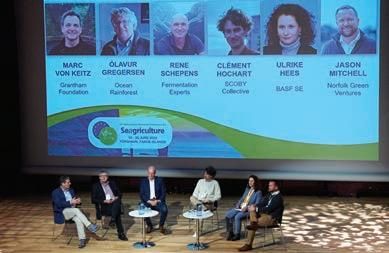
Over three days in June Seagriculture EU 2025 offers a conference, trade show, site visits, and networking making it invaluable for anyone interested in seaweed.
NWO-KIC Aquatic Food production projects CircAqua, SeaSeeds, and From Sea to Society.
The main conference programme runs from 18 to 19 June and features a dynamic, international lineup. Across five plenary sessions, two panel discussions, and a series of Seaweed Elevator Pitches, the programme will address key themes and innovations across the seaweed sector. Researchers will also present posters, offering opportunities for academic dialogue and exchange. Confirmed speakers include
some of the most respected voices in the industry. Alan T. Critchley, Research Fellow at the Verschuren Centre, Dr Stefan Kraan, CSO of Oceana Organic Products, Rita Sousa, Partner at Faber, Pierre Paslier, Co-Founder and Co-CEO of Notpla, and Juliet Brodie, Merit Researcher at the Natural History Museum, will all share their insights. They will be joined by representatives from leading organisations including TotalEnergies Corbion, Rabobank, Necton, and the Food and Agriculture Organization of the United Nations (FAO). The full
conference programme is available at www.seagriculture.eu/ conference-program-2025/.
Trade show to highlight seaweed-related products and services
In parallel with the conference, the trade show will provide a platform for seaweed-focused businesses to showcase their products and services and to foster new partnerships. Networking events, including a conference dinner, will further encourage connection and collaboration among participants.
As exclusive event sponsors, the Province of South Holland and the Municipality of Rotterdam are supporting Seagriculture EU 2025 to foster innovation and collaboration across the seaweed industry. Meindert Stolk, Regional Minister for Regional Economy and Innovation, Environmental Quality and Enforcement, and Culture and Heritage at the Province of South Holland, underlined the region’s potential as a hub for sustainable
solutions. He called South Holland a place where innovation and diversity come together—from cutting-edge research to strong industrial and agricultural sectors. Seaweed offers enormous potential in the transition to a circular and sustainable economy. Hosting Seagriculture EU 2025 in our region reflects our commitment to supporting blue innovation and building strong, future-proof industries, he added.
This strong regional foundation makes South Holland an ideal host for this global gathering of seaweed leaders and changemakers. With more than 170 delegates already registered Seagriculture EU 2025 is shaping up to be a major meeting point for the international seaweed community. Over 250 delegates from more than 30 countries are expected to attend. The event is designed to connect
XII ANFACO World Tuna Conference, 11-12 September 2025, Vigo
stakeholders, facilitate knowledge exchange, and help shape the future of the global seaweed industry. Registration is open at www.seagriculture.eu.
DLG BENELUX
Amalialaan 43
3743 KE Baarn, The Netherlands
+31 85 401 73 97
info@dlg-benelux.com
On 1 April 2025, the official presentation of the XII ANFACO World Tuna Conference took place at the headquarters of the Confederation of Entrepreneurs of Pontevedra (CEP). The theme of the conference is Reaching for new consumers.
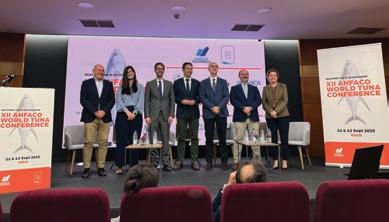
The XII ANFACO World Tuna Conference was officially launched at an event at the at the headquarters of the Confederation of Entrepreneurs of Pontevedra in April. The conference will be held in September 2025.
The presentation was chaired by Alfonso Villares, Regional Minister of the Sea of the Xunta de Galicia, alongside Roberto Alonso, Secretary General of ANFACOCECOPESCA and representative of FUNPROMAR. The event was
also attended by representatives from key sponsors, including Marine Instruments—Nautical, Hermasa, ABANCA, AON, and Canon. Based in Vigo, ANFACOCECOPESCA, the organisation behind the conference, represents the Spanish seafood
industry cluster. It promotes and defends the interests of its members before public institutions, multilateral bodies, and industry associations both nationally and internationally. It also delivers R&D&I services, technical advice, food quality and safety support,
training, and international cooperation, contributing to sectoral competitiveness.
Vigo strengthens its global leadership in the tuna sector
Vigo once again reaffirms its role as the international capital of the tuna industry. The event is expected to attract over 400 senior executives and industry leaders from more than 35 countries, including the United States, Ecuador, Peru, Brazil, Morocco, Thailand, Taiwan, Indonesia, the Philippines, the UAE, China, and Australia, among others. These attendees represent companies accounting for more than 90 of the global canned tuna production. Spain—especially Galicia— consolidates its status as Europe’s leading tuna producer and the second largest worldwide. This conference plays a key role in reinforcing international trade links and fostering growth in the sector.
This year’s edition will introduce several new elements, including keynote speeches by international experts, expanding beyond the traditional panels and presentations. Simultaneous interpretation will be available in English, French, and Spanish. The first speakers will be revealed progressively from 28 April onwards. Core topics to be covered include updates on tuna stock management, value-added product innovations, social challenges, technology development, and regional market outlooks across Europe, Asia, Oceania, Africa, the Middle East, and the Americas. Originally launched
in 1996 as the 1st European Tuna Conference, the event has grown significantly, reflecting the internationalisation of the tuna industry and its evolving needs. Nearly three decades later, it has become a key fixture on the industry’s global calendar.
The Conference is supported by prominent organisations such as EUROTHON, AIPCE-CEP, ANCIT, FIAC, ANICP, ANABAC, FEICOPESCA, ATUNEC-Ecuador, the Peruvian Tuna Chamber, ORTHONGEL, ABIPESCA, IATTC, Friend of the Sea, the National Fisheries Society, OPAGAC, and INFOFISH. Media coverage will be provided by Undercurrent News, with institutional support from the Xunta de Galicia, Eurofish International Organisation, and Industria Conservera Magazine.
Tuna Week to feature awards and exhibitions alongside the conference
The XII ANFACO World Tuna Conference will be part of a wider Tuna Week programme that includes:
Tuna Awards 2025 – Third Edition (10 September 2025, 19:30)
To be held at the Salón Regio of the RC Celta Headquarters (C/ Príncipe, 44), this event will recognise international achievements in innovation and the green and digital transition within the tuna sector. Organised with the Ministry of Agriculture, Fisheries and Food, awards will be presented in three categories: New Products, Revolution 4.0, and Circular Economy. Submissions are open until 15 June at https://tunaawards.com.
15th International Conference on Aquaculture, 2 to 4 April, Vukovar, Croatia
Tuna Exhibition (11–12 September 2025)
Held in the Reception Hall of Afundación Headquarters in Vigo, this exhibition will offer companies and organisations an opportunity to present new products, equipment, machinery, and services relevant to the tuna sector. Organised in cooperation with the Regional Ministry of the Sea, it will also serve as a networking venue and include tastings of tuna and other seafood products.
Registration for the conference is now open through the official website: https://tunavigo.anfaco.es.
XII ANFACO World Tuna Conference
Ana Iglesias, General Coordinator Tel.: +34 673 692 928 tunaconference@anfaco.es
Experts in aquaculture from Croatia and abroad gathered in Vukovar to discuss the current state of aquaculture in Croatia and Europe and the use of new technologies and advancements in fish breeding and feeding. Participants included representatives of the European Commission, Eurofish, the Federation of European Aquaculture Producers (FEAP), aquaculture breeders’ associations from Hungary, Romania, and the Czech Republic, alongside researchers from neighbouring countries.
The consequences of climate change, the need to adapt to green policies and sustainable business practices, inflation, and rising costs are the biggest challenges faced by fisheries and aquaculture, strategic sectors of the Croatian economy that are particularly important for developing coastal areas and islands. Domestic aquaculture producers are facing numerous challenges. Operating costs,
including labour costs, have significantly increased, and freshwater aquaculture producers are dealing with additional costs caused by the impacts of climate change, especially floods and droughts. Moreover, the rise in production costs is driven by new standards aquaculture producers must implement as part of the green transition, animal welfare regulations, and increasingly strict legal restrictions on production.
It is also important to mention predator protection, stricter environmental requirements, and the loss of income from hunting, said Dragan Kova evi , Vice President of the Croatian Chamber of Economy for Agriculture and Tourism.
Ivan Matijevi , State Secretary at the Ministry of Agriculture,
Forestry and Fisheries, emphasised that the Ministry and the Government continue to work on ensuring the sector’s stability and resilience through responsible resource management and adaptation of farming practices. Croatian aquaculture products are a significant export success—almost 100 of tuna production, around 90 of white fish, and more than 45 of carp species are exported. Exports
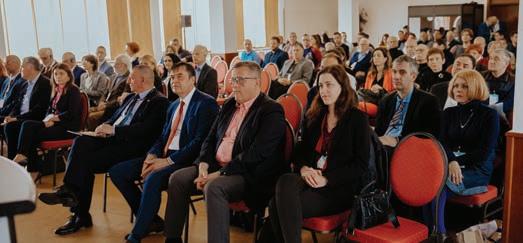
to the most demanding global markets confirm the high quality of domestic fish and seafood products. Total mariculture production—including white fish, blue fish (tuna), and shellfish farming—reached 23 thousand tonnes in 2023, almost the same as in 2022. Ivan Leko, President of the Mariculture Group of the Croatian Chamber of Economy’s Fisheries Association and CEO of Cromaris, described the industry’s situation as highly challenging due to the significant increase in input costs, the long farming cycle, and the high cost of stock financing. The effects of global warming—especially rising sea temperatures and more frequent extreme weather events—pose new challenges for the industry by increasing operational risks and production costs. The market is also under pressure from global geopolitical uncertainty, reduced purchasing power in key markets, growing competition from third countries like Turkey and North African nations, and rising tuna catch quotas—all contributing
to downward pressure on sales prices, said Mr Leko, adding that timely and targeted support is essential to maintain current production levels.
Freshwater fish farming in Croatia includes about 12,500 hectares of carp ponds and 40,000 square meters of trout ponds. Despite numerous challenges, early statistics show that production in 2024 increased by around 15 compared to the previous year, thanks to optimised production processes, investments, and the introduction of new know-how, technologies, and innovations. The key challenges for freshwater fish farmers include water shortages caused by changing hydrological conditions, an increasing number of fish-eating birds (cormorants), which are not being managed at either the Croatian or EU level, and significant imports of lower-quality trout
from Bosnia and Herzegovina, Turkey, and Italy, said Ksenija Vukman, President of the Freshwater Fish Farming Group of the CCE’s Fisheries Association and Head of Orahovica Agricultural Company’s fish farming division. Although aquaculture is one of the world’s fastest-growing food production industries, this sector is still far from reaching its full potential in the EU, accounting for less than 2 of global aquaculture production. EU aquaculture products comprise only 10 of total fish consumption within the Union, representing a significant opportunity for Croatian products and further sector development.
According to the latest estimates from EUMOFA (European Market Observatory for Fisheries and Aquaculture Products), Croatia ranks 7th in the EU in terms of fish consumption, with a total of 23.71 kg per capita, slightly above the
EU average of 23.51 kg. While fish consumption is declining across the EU, it continues to grow steadily in Croatia, supported partly by the Croatian Fish—Eat What’s Worth Eating campaign run by the Croatian Chamber of Economy since 2011.
The conference was organised in cooperation with the Faculty of Agriculture at the University of Zagreb, the Ru er Boškovi Institute, the Faculty of Agrobiotechnical Sciences in Osijek, the Croatian Veterinary Institute, the Faculty of Food Technology and Biotechnology at the University of Zagreb, the Faculty of Food Technology in Osijek, the University of Dubrovnik, the Lavoslav Ruži ka Polytechnic in Vukovar, the Faculty of Veterinary Medicine at the University in Zagreb, and the University of Zadar. The event was sponsored by the Ministry of Agriculture, Forestry and Fisheries, the Ministry of Environmental Protection and Green Transition, Vukovar-Srijem County and the City of Vukovar.
The AlgaeProBANOS project has developed a suite of digital tools and physical products
Global demand for sustainable, biobased products is skyrocketing. Algae offer unparalleled opportunities to meet this demand without placing undue pressure on terrestrial ecosystems or freshwater supplies.
The AlgaeProBANOS (APB) project, funded under the Horizon Europe framework and the EU Mission Ocean, was designed to harness the potential of algae as a sustainable and versatile biomass resource for the Baltic and North Sea regions (BANOS).
Contributing to growth and sustainability goals
By 2030, the EU Mission Ocean aims to protect and restore the health of our ocean and waters through research and innovation, citizen engagement, and blue investments. The Mission’s new, systemic approach addresses the ocean and waters as one and plays a key role in achieving climate neutrality and restoring nature. APB leverages regional strengths to build integrated and sustainable value chains for eight algae-based products across six pilot partners. With a focus on applications in food, feed, nutraceuticals, textiles, cosmetics, and plant biostimulants, APB aims to accelerate the launch of algae-derived products on the market. These innovations promote economic growth and support the EU’s environmental and social sustainability goals.
With 26 partners in the consortium, APB is on track to deliver impactful solutions that balance

Researchers at oceanBASIS are actively extracting water-soluble fucoidans (pictured) from brown seaweed to investigate their potential health benefits at UKSH, specifically focused on age-related neurodegenerative diseases.
economic, environmental, and social imperatives, ensuring long-term benefits for the BANOS region and beyond. The objective is to have a thriving algae-based bioeconomy in the BANOS region by 2050. In the first two years, APB has made substantial progress in developing an interdisciplinary framework to assess algae value chains and address ecological, economic, and social dimensions. This framework supports informed
decision-making and ensures alignment with the UN Sustainable Development Goals (SDGs). Advances in algae cultivation strategies to improve biomass yield and reduce production costs are ongoing. Efforts include nutrient recycling, low-energy harvesting, and the development of a sustainable wild harvesting framework. The first iterations of digital platforms that integrate data and provide decision-support tools for stakeholders across
the algae value chain have been developed for testing by stakeholders. Let us dive into each to understand better where we are headed.
The six startups and SMEs implementing the AlgaeProBANOS pilots are moving forward in the development of eight innovative algae-based products, which include food, feed, cosmetics,
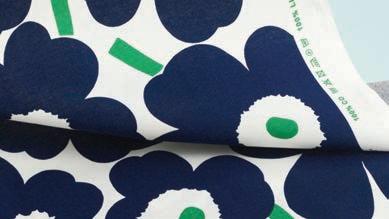
nutraceuticals, biostimulants, and textile agents. The products use Baltic and North Sea algae, microalgae from carbon capture and utilisation, and harmful algal blooms. First product prototypes are currently under review, and feedback from potential customers and end users is being collected, with initial go-to-market strategies in place. By the end of the project, pilots aim to reach a Technology Readiness Level (TRL) of 7-9, meaning that the products are close to market. Internal commercialisation and go-to-market strategies will be adapted to create broader blueprints, which will be made available to algae businesses and support the growth of the wider sector.
The monitoring framework developed in the AlgaeProBANOS project focuses on the sustainable performance of algae products across environmental, economic, social, and governance dimensions.
The process of developing this framework consisted of several smaller steps. To collect and use the current best practices and knowledge, we drew from for many different existing sustainability frameworks and academic publications focusing on sustainable performance. We recognise that natural environments have inherent limitations essential to ecosystem functioning and maintaining vital conditions for the biosphere and its subsystems. These non-negotiable thresholds highlight the urgent need for cross-disciplinary dialogue to foster an integrated approach to sustainability assessment. Tools such as social life cycle assessments (LCA) will be used to integrate different dimensions.
Progress on the pilot systems’ LCAs is advancing nicely. Detailed system diagrams are being developed to comprehensively represent the processes and material flows. These diagrams are critical for identifying key inputs, outputs, and
basic macroalgae features and aquatic environment indicators should be applied as monitoring parameters. Joint projects and cost-sharing between stakeholders could reduce monitoring costs. National policies regarding wild seaweed harvesting could be strengthened by linking wild harvesting sites and national MSPs and by sharing governance of local seaweed resources.
environmental impact categories. Value chains have been established for each pilot, ensuring a clear understanding of the ecological connections from raw material sourcing to final product outputs. This phase has involved setting tentative functional units and determining the system boundaries and baselines for comparison to ensure that the assessments accurately reflect the environmental impacts across the entire lifecycle. Collaboration with algae LCA experts from across a range of EU-funded projects and beyond is ongoing, with the aim of developing a standardised methodology.
In the EU, wild harvesting is still the most important method of seaweed biomass production, although only Estonia permits large-scale wild harvesting in the Baltic region. Recommendations for monitoring sustainable wild harvesting developed under APB include assessing the standing stock as the first step to establishing the baseline. Then,
After receiving over 40 applications, the AlgaeProBANOS project selected ten dynamic startups to receive €10,000 worth of mentoring services. The Algae Accelerator is a six-month mentorship programme that supports startups and SMEs in the algae value chain in upscaling their business strategies. The initiative aims to introduce new, sustainable alternatives to the market, address key challenges, and boost the development and uptake of innovative algae-based products.
The selected startups and SMEs are AlgaePhos4X, Algamol, Amelia Space Technologies, Anaula, Biopharmia, CLASH Algaeproducts, ER LAB, Jordà Food Group, Kybeles Garden, and Palgae. They come from across Europe— including Latvia, Turkey, Norway, and France, and work on various innovations, from algae-based leather and rubber replacements to satellite observation of algal blooms. In the Algae Accelerator programme, start-ups are matched with expert mentors who support the entrepreneurs in tackling the business challenges set out in their applications. The second Algae Accelerator call, which will support up to ten more start-ups and SMEs, will be launched in late 2025.
The Blue Bio Match platform was developed as a collaborative initiative between the APB project and the Blue Bio Clusters, Baltic Muppets and SeaMark projects. This online hub aims to bring together diverse stakeholders in the blue bioeconomy, including startups, SMEs, industry, researchers, policymakers, and funders. The platform facilitates knowledge exchange, fosters collaboration, and promotes sustainable innovation within the blue economy.
As part of the AlgaeProBANOS project, the Algae Business Club (ABC) has been successfully integrated into the SUBMARINER Algae Working Group, which is now hosted on the Blue Bio Match platform, offering an interactive space where people in the algae sector can connect and collaborate. As part of the SUBMARINER Algae Working Group, the ABC provides a structured environment for stakeholders to network and exchange ideas, access major algae marketplaces, and participate in quarterly online meetups, during which members discuss the latest industry trends, challenges, and innovations. These meetups provide a valuable platform for sharing experiences and exploring collaborative solutions.
By leveraging the pre-existing SUBMARINER Algae Working Group, integrating the Algae Business Club into Blue Bio Match has reached over 200 active members at the time of writing, amplifying engagement with key algae industry stakeholders. This strategic move avoids the challenges of creating a new network from scratch while connecting ABC with a broad community within the blue bioeconomy.
A further digital tool under development in the AlgaeProBANOS project is the Algae Economist biorefinery tool. This tool aims to help algae businesses assess the economic impacts of key choices in biorefinery process configurations and performance parameters. Partners are working on an initial draft for potential integration into various algae valorisation processes.
Experiments have begun with AI-driven methods for querying and extracting relevant information to support the APB farming dashboard with insightful, context-specific data. Using the algae knowledge base, we are testing advanced prompting techniques to retrieve specific data on farms, algae species, and related environmental conditions. While this approach is still experimental, results have been promising. Although this integration is still under development, and results are not yet guaranteed, these AI-enhanced data collection methods will ultimately enhance the dashboard’s value for end users. This process holds significant potential for providing farmers and researchers with streamlined access to critical information and advancing data-driven decision making across the project. The front end of the algae farming dashboard features an embedded map integrated with a faceted browsing interface. Based on their headquarters locations, the dashboard offers users a dynamic view of algae-related companies and organisations across Europe.
In March of this year, APB partners gathered in Tromsø to showcase and discuss the proj-
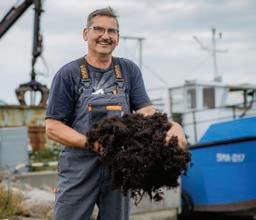
ect’s development. The mayor of Tromsø, Gunnar Wilhelmsen, opened the meeting and participated in a tasting session in which fishcakes containing algae were compared with a second version of the same fishcake without the added algae. “Seaweed and algae are versatile and sustainable renewable resources with great potential for use in a wide range of product applications, but it doesn’t happen without effort,” stated Dagbjørn Skipnes, Senior Scientist at Nofima, a project partner. “If seaweed and algae are going to be used as food ingredients, they should be processed so that the health benefits and culinary experience are realised. In this project, we use complicated technologies ranging from simple processing like cooking and drying to advanced technologies such as ultrasound and pulsed electric fields”.
Ideation workshops drive product innovation and market
exploration. The first workshops, held in 2023, focused on internal AlgaeProBANOS pilot projects and helped to identify challenges and solutions for product development within the consortium. In 2025, look out for ideation workshops targeting SMEs and startups involved in the Algae Accelerator. These sessions will help participants refine their business models and identify opportunities for market growth. In 2026, more extensive ideation workshops will be held with industry leaders, encouraging collaboration between SMEs and established enterprises to scale algaebased innovations. Interested parties are invited to contact the project coordinator via the project website at https://algaeprobanos.eu.
Nicole NeSmith, Submariner Network, nn@submarinernetwork.eu
The wild harvesting recommendations and monitoring frameworks for micro- and macroalgal value chains are available for the public at submariner-network.eu/.

Changes in legislation, investments in infrastructure, and restoration of the environment are some of the ways in which Romania is upgrading its fisheries and aquaculture sector to better equip it to deal with challenges and opportunities both today and in the future.
In recent years, Romania has made significant progress in modernising and strengthening its fisheries and aquaculture sectors, explains Marian Avram, former president of the National Agency for Fisheries and Aquaculture (ANPA). Responding to both long-standing structural issues and more recent external pressures, such as environmental degradation and geopolitical instability, the Romanian authorities have pursued a comprehensive agenda of legislative reform, financial investment, and strategic planning. This approach has aimed to ensure both the sustainability and economic viability of these critical sectors, while aligning closely with EU environmental and climate priorities.
A major step forward has been the legislative separation of fisheries and aquaculture governance. In 2024, Romania formalised this split by adopting two distinct legal frameworks. The Law on Aquaculture, adopted in 2023 but sent back for constitutional clarification, aimed to provide a unified legal structure for aquaculture operations and the marketing of aquaculture products. While this clarification is awaited, ANPA is working on an emergency ordinance to address pressing issues for operators, including simplifying access to water resources and concession procedures. The Fisheries Act, which entered into force in 2024, focuses on the protection, conservation, management,
and sustainable exploitation of living aquatic resources in natural environments. A key feature of this new law is the creation of a dedicated fisheries fund, which will be financed by revenues from authorisations, concession fees, and similar sources. This fund is intended to support a range of investments, such as infrastructure maintenance and environmental restoration projects, including the restocking of aquatic species in natural habitats.
These legislative changes were intended to create a more coherent and effective management framework by distinguishing the unique needs of each sector. However, external challenges have added complexity to their implementation. The ongoing war in Ukraine has driven up fuel and input costs, significantly increasing operational expenses for fishing and aquaculture businesses, Mr Avram points out. To mitigate these impacts, the Romanian government introduced a state aid scheme in mid-2023 to reduce excise duties on diesel used in aquaculture and to cushion the effects of inflation. Additional governmental measures included compensations for aquaculture installations operating in protected areas and policies related to marine waste collection, which also align with broader environmental objectives. Catches from Black Sea fisheries have fallen since 2018 but have been stable from 2021 to 2023. The
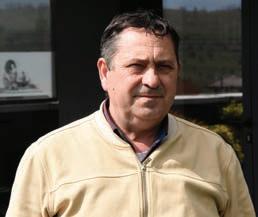
fall is attributed to a combination of environmental factors, including eutrophication, climate change, and pollution, as well as Romania’s limited capacity to fully exploit its fishing rights. In response, ANPA has outlined plans to improve port infrastructure, establish fish shelters, and develop landing points equipped with processing and storage facilities. These developments aim to maximise the use of nonreimbursable funds and facilitate the processing and marketing of catches, including traditional and canned products based on sprat.
Rapa whelk, another species of interest, has seen a steady decline
in catches since 2018. Originally from Asian waters and now considered invasive in the Black Sea, the species became economically valuable due to strong demand from East Asian markets such as South Korea and Japan. However, recent coastal sand nourishment projects have disrupted the species‘ habitat, while overfishing has depleted stocks. The species‘ impact on native mollusc populations, which serve as its main food source, has created ecological imbalances. As a result, rapa whelk catches have fallen, affecting Romania’s fish processing sector and reducing export volumes. ANPA, says Mr Avram, recognises the need for sustainable management strategies to balance economic value with ecosystem health and has committed to investing in measures that will restore and

Fish species201820192020202120222023
Total 7,742 7,149 4,463 3,126 3,176 3,296
Veined rapa whelk 7,3306,8154,1162,7462,4532,670
Mediterranean mussel 231159117125446317
European sprat 3295486292
Turbot 585470757570
Mediterranean horse mackerel 291827282054
Surmullets (=Red mullets) NEI 8412352636
European anchovy 324772393026
Other 224445326329 FAO. 2025. FishStat: Global capture production 1950-2023
maintain viable population levels without further harming native species. Climate change is increasingly influencing the dynamics of the Black Sea ecosystem. The region is warming faster than the global average, resulting in shifts in species distribution, more intense storms, and irregular precipitation patterns. These changes have direct implications for the viability of both aquaculture and traditional fisheries. Romania has taken steps to address these challenges through a series of adaptive strategies. These include the promotion of resilient aquaculture practices, such as the cultivation of species better suited to higher temperatures and variable environmental conditions. Farm management practices are also being improved, with a focus on biosecurity and disease prevention.
In the fisheries sector, the implementation of flexible quotas and the adoption of ecosystem-based management approaches are seen as essential. Such approaches aim to maintain the balance and resilience of the broader marine ecosystem, rather than targeting individual species in isolation. Romania is also investing in research and continuous monitoring of marine conditions to
better understand and respond to the impacts of climate change. These efforts are complemented by regional cooperation initiatives, which are increasingly important given the shared nature of the Black Sea‘s resources and environmental challenges.
One area with significant development potential is bivalve aquaculture, particularly mussel farming. However, despite legislative efforts
to facilitate this activity, production remains negligible, with aquaculture mussel output reported as non-existent in 2022. Wild mussel catches reached approximately 450 tonnes that year, but farming has yet to take off. In 2022, Romania launched a medium-term development strategy for the fisheries sector, with a vision extending to 2035. This strategy, states Mr Avram, was developed through multi-stakeholder dialogue, involving government ministries, agencies, research institutes, and industry representatives. Key milestones include the amendment of legislation on seawater concessions, the introduction of aquaculture into financing guidelines, and the establishment of designated aquaculture areas. Currently, three concessions have been granted for bivalve farming, and funding calls are expected to open soon under the national fisheries and aquaculture operational programme. Pilot projects managed by the National Institute for Marine Research and Development (INCDM) have explored the farming of species such as sea bream, rainbow trout, and mussels. These are part of a broader effort to test species adaptability and promote marine
aquaculture along the Romanian coast, supported in part by the General Fisheries Commission for the Mediterranean.
Looking ahead, Romania’s fisheries and aquaculture development objectives are tied closely to the European Maritime, Fisheries and Aquaculture Fund (EMFAF) 2021–2027 programme. This initiative allocates €232 million—€162.4 million from the EU—with a focus on promoting sustainable growth. National priorities include compliance with EU landing obligations, modernisation of infrastructure, reduction of carbon emissions, and the promotion of energy-efficient practices. Equally important are measures to strengthen producer organisations, boost the processing and marketing of fish products, and support the sustainable development of coastal regions. Environmental protection and biodiversity conservation are also integral to these goals. Significant investment has been earmarked for port development and the
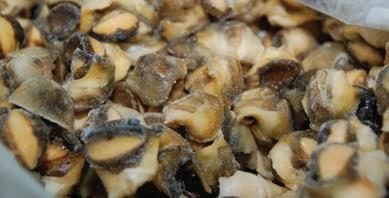
creation of infrastructure such as landing points and fish shelters. For example, a feasibility study for Midia Port has been completed, and local authorities have already transferred the necessary land for other infrastructure projects. The construction of inspector offices within new fish shelters will enhance regulatory oversight and ensure compliance with national and EU laws. Inland aquaculture is also receiving attention, with large-scale facilities like a 600tonne trout farm in Alba County and a sturgeon farm in Tulcea serving as examples of innovation and scalability.
Romania’s goal to increase aquaculture production to over 13,500 tonnes in 2025 is ambitious, given that production has remained stable at approximately 11,300 tonnes in both 2022 and 2023. Achieving this target will require expansion in species diversity, the adoption

of modern technologies like recirculating aquaculture systems (RAS), and simplification of the rules and regulations governing this activity. The development of new farms, especially in regions with untapped potential, must be matched with infrastructure investment and technical training. Research will play a critical role, particularly in breeding, feed efficiency, and disease management. Effective collaboration between research institutes and the private sector is essential for applying scientific innovations in commercial operations, emphasises Mr Avram. Marketing strategies must also evolve to raise consumer awareness of the nutritional and environmental advantages of farmed fish, thereby driving increased domestic demand. The Common Fisheries Policy (CFP) requires that national strategic plans simplify administrative procedures and ensure secure access to aquatic resources. Romania has responded by streamlining licensing processes, reducing bureaucratic barriers, and
Fish species201820192020202120222023
Total 11,30312,60912,17011,37211,21111,264
Rainbow trout 2,2512,6182,6362,5363,1073,527
Common carp 4,3574,1913,6473,2313,0623,061
Bighead carp 2,5482,8702,2372,5092,2531,881
Silver carp 1,6921,4651,7431,4311,2801,165
Crucian carp - 9751,120977786875
Sturgeons NEI 519484146177225
Grass carp (=White amur) 164143198198141146
Freshwater fishes NEI 134 - 2296215140
Wels(=Som) catfish 2853626478104
North African catfish - 1011281884671
Pike-perch 627870674940
Northern pike 172116191827
FAO. 2025. FishStat: Global aquaculture production 1950-2023

The ambition to increase farmed fish production by almost a fifth in 2025 calls for increased use of intensive farming systems and a reduction in bureaucratic constraints.
promoting stakeholder engagement in policymaking. A national digitalisation initiative is being implemented by ANPA to issue licences and permits electronically. Electronic reporting systems for commercial fishing are being deployed at the Black Sea, with similar tools planned for recreational fisheries. While recreational fishing has traditionally lacked standardised data collection, Romania is working with the European Commission to address this gap and develop a digital monitoring system.
Rainbow trout farming in the Black Sea is another promising development. While this activity has historically been confined to inland mountainous areas, legislative changes and pilot studies have opened up the possibility of marine trout farming along the Romanian coast. Research by INCDM has shown that trout species can adapt successfully to the Black Sea environment, developing into large (3-4 kg) specimens in a short period. This progress mirrors the success of similar initiatives in countries like Turkey. Much of this fish is likely to be
exported as the domestic market is somewhat limited. Promoting fish consumption remains a longterm challenge. Despite previous EMFAF-funded campaigns that focused on the health and environmental benefits of fish, Romanian per capita consumption remains below the EU average. Future initiatives aim to build on earlier efforts by improving marketing strategies and expanding product availability. Funding under the EMFAF programme will continue to support these goals, particularly in relation to processing, branding, and consumer education.
The Romanian fisheries and aquaculture sector is at a point of transformation, says Mr Avram. Legislative reform, strategic investment, and international cooperation are laying the foundations for sustainable growth. However, the success of these initiatives will depend on effective implementation, continued stakeholder engagement, and the ability to adapt to both environmental and market-driven changes. With the right blend of policy, technology, and collaboration, Romania has the potential to become a more competitive and sustainable player in the European seafood economy.

With its multidisciplinary team of scientists the National Institute for Marine Research and Development “Grigore Antipa” conducts valuable research with practical implications. The aim is to demonstrate to potential investors the technical feasibility of these approaches.
The National Institute for Marine Research and Development “Grigore Antipa” (NIMRD) in Constanta is Romania’s leading centre for marine science. With a legacy dating back to 1970, and named after the eminent Romanian zoologist Grigore Antipa, the institute has evolved into a multidisciplinary hub for marine and coastal research, ecosystem monitoring, and sustainable development. Today, the institute plays a pivotal role in shaping the future of marine aquaculture, biodiversity conservation, and marine resource management in Romania.
NIMRD operates as a public research institute under the coordination of the National Research Authority. It carries out scientific research, applied studies, and technical consulting on marine ecosystems, fisheries, aquaculture, coastal dynamics, environmental monitoring, and climate impacts. As the national authority on the Black Sea’s marine environment, NIMRD is responsible for regular ecological assessments and biodiversity monitoring, including under the EU Marine Strategy Framework Directive. At the same time, it serves a broader regional role. As one of two aquaculture demonstration centres of the General Fisheries Commission
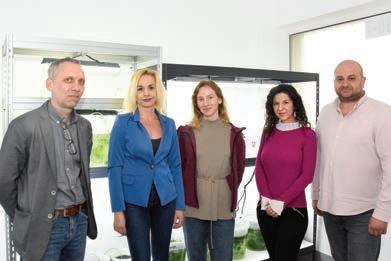
for the Mediterranean (GFCM), NIMRD provides expertise and practical solutions for developing sustainable marine aquaculture in the Black Sea region. While its theoretical specialisation is shellfish, the institute supports both shellfish and finfish projects due to Romania’s specific needs and environmental conditions.
Dr Ni , head of the Marine Living Resources Department, outlined the institute’s strong engagement
with developing marine aquaculture in Romania—an underexploited but promising sector. Despite legislative ambiguity and challenging environmental conditions, NIMRD has taken a proactive role in researching species suitability, testing aquaculture technologies, and transferring know-how to potential investors. One notable example is the experimental cultivation of rainbow trout (Oncorhynchus mykiss) in marine cages. In partnership with a private entrepreneur, the institute supported trials to raise freshwater trout
during the colder months. Starting from 100 g juveniles reared in mountain farms, the trout were successfully acclimatised to seawater with minimal stress or mortality. The trials also determined that bigger fish when introduced into seawater took a longer time to acclimatise. Recirculating aquaculture systems (RAS) at the institute’s facilities showed that the trout in saltwater grew twice as fast as their freshwater counterparts, likely due to accelerated metabolism and higher feed intake. This growth rate may not be realised in the sea, however,
because conditions in the institute facilities are more conducive to growth than cages in the sea. While larger-scale sea cage farming is not yet fully operational, the research confirms the technical feasibility of seasonal trout farming in brackish Black Sea conditions. The fish can be in the sea from October to May when the temperature is favourable; outside this window the water is too warm for the fish. The results are particularly relevant given the growing interest in so-called “Black Sea salmon”, already being marketed by Turkish producers using similar methods. Dr Nita explains that the role of the institute is two-fold: it designs and conducts the initial trials as requested, but it also anticipates future demands for advice and services if marine and brackish water aquaculture were to take off in Romania. So, for example, he has been conducted trials on raising seabream and seabass in brackish water systems as this could prove to be another species of interest to entrepreneurs. The pilot study showed that while seabream grew rapidly the seabass grew more slowly but both species adapted quickly to the change from marine to brackish conditions.
Alongside finfish, NIMRD has been spearheading efforts to develop shellfish aquaculture. Supported by GFCM funding, the institute launched a pilot project on farming Pacific oysters (Crassostrea gigas) using two- or threemonth-old oyster spat imported from Italy and innovative circular cages also developed in Italy. The design allows cages to rotate with currents, preventing biofouling and helping shape smoother

shells with higher meat yields. Early results have been promising: individuals grown in Black Sea conditions showed a meat-to-shell ratio exceeding 20, significantly higher than the 5–15 commonly observed in the Adriatic. This high meat content is attributed to nutrient-rich phytoplankton sustained by the Danube’s freshwater inflows. Although 2024 saw colder coastal waters, oyster growth rates remained favourable, with individuals reaching market size (>35 g) within months. Plans are in place to retain them for a full year and observe longer-term growth towards 100 g. Importantly, the oyster species used is legally authorised for aquaculture in Romania.
NIMRD envisions holding a workshop in summer to present these findings and those from the fish trials to private investors, fishermen, and policymakers, aiming to give commercial actors the confidence to take up farming. Our task is to demonstrate that it is technically feasible to farm fish and shellfish in the Black Sea, says Dr Nita, adding that if demand increases, the institute plans to build a local hatchery to reduce reliance on foreign spat imports and ensure supply continuity for emerging producers.
In parallel, NIMRD is investing in scaling up its capacity to cultivate microalgae and macroalgae—sectors with potentially high returns and environmental cobenefits—under the leadership of Dr Timofte. Supported by the Horizon-funded Ex-Aqua project, the institute has started developing laboratory and pilot-scale infrastructure for algae cultivation. With partners from Ghent University and Alfred Wegener

Institute, the focus is two-fold: building local expertise in algal cultivation and detecting and managing harmful algal blooms. Dr Timofte explains that algae offer a more rapid return on investment compared to mussels or fish, with lower dependencies on open-sea conditions as algae can be produced in land-based facilties. The institute has already started pilot cultivation of species such as Ulva and Porphyra, valued for their use in cosmetics, biostimulants, and pharmaceuticals. Spirulina is being used as an entry-level species due to its ease of culture and market familiarity.
Macroalgae projects also support environmental restoration. One area of focus is Cystoseira barbata, a habitat-forming species under
threat from measures to protect the coast from erosion. The institute is experimenting with laboratory propagation techniques both to support future restocking in the wild but also to identify the most efficient growing technologies as this will be a key factor in any investor’s considerations. It is working to adapt farming technologies from Asia and northern Europe to local Black Sea conditions, taking advantage of Romania’s high levels of sunlight, available space for land-based systems, and more favourable cost structure compared with northern European countries. Algae have many potential uses including as biofuels, feed, fertiliser, food, and in the cosmetic, nutraceutical, and pharmaceutical industries, says Dr Timofte, but initially he will concentrate on the lower-hanging fruit
such as fertiliser and biostimulants for plants as the criteria for growing algae to be used in these areas are less stringent than if they are to be used as food or feed. Ultimately, the idea is to convince investors of the economic feasibility to encourage them to start a business that will boost economic activity in the region.
The institute’s work extends beyond aquaculture. Its laboratories also carry out toxicology testing on contaminants such as pesticides, antibiotics, and pharmaceuticals found in the marine environment. A recent experiment focused on tebuconazole, a fungicide commonly used in agriculture. Even at low concentrations, it proved highly toxic to mullet juveniles, raising concerns about runoff impacts on coastal ecosystems. NIMRD follows OECD protocols for acute toxicity testing, aiming to build a robust database of chemical risks in the Black Sea context.
Climate change is another area of growing concern. The institute has recorded shifts in water temperature, salinity fluctuations, storm frequency, and fish migration routes. For instance, 2024 saw unusually cold coastal waters in spring, preventing the traditional migration of shad along the Romanian shoreline. Instead of being caught by seaside fishers, the species stayed offshore before entering the Danube. At the same time, last summer saw a month-long period with unusually high water temperatures that extended from the surface to a depth of 1.5 m. This was a windy period so the oxygen level of the water was quite high but often high temperature results in algal blooms and oxygen depletion. Higher temperatures are also being

recorded for longer periods sometimes stretching from the summer to September or October. Storms have also intensified over the years becoming more destructive. These changes have implications for both wild fisheries and aquaculture site planning and also contribute to the spread or alien species.
NIMRD also plays a critical role in validating the physical resilience of aquaculture infrastructure. In 2024, the institute‘s test installation withstood a record-breaking 7.4metre wave, exceeding previous predictions. The successful endurance of these installations challenges scepticism from fishers and policymakers who believed the Black Sea’s storminess would prevent aquaculture. The key, Dr Ni insists, is to follow technical specifications rigorously rather than cut corners on costs. This cautious but evidence-driven approach underpins all of NIMRD’s field experiments. Whether testing fish growth rates, oyster mortality, or the structural stability of floating cages, the institute aims to provide commercial actors with real-world data. In the absence of mature private investment, NIMRD’s small-scale trials serve as vital demonstrations of feasibility.
While NIMRD is not a commercial producer, it does have the legal option to establish spin-offs or collaborate with start-ups. This flexibility is increasingly important as it looks to support innovation while remaining focused on its core research mission. The institute is currently evaluating internal procedures for such partnerships, with the goal of fostering sustainable businesses that apply NIMRD’s findings in real-world settings. Energy self-sufficiency is another

future objective. Rising electricity costs have prompted the institute to apply for photovoltaic infrastructure to cover its own consumption. While regulatory and technical barriers remain, Dr Timofte notes the long-term importance of reducing reliance on external energy sources, especially given the demands of laboratory cultivation and aquaculture systems.
Ultimately, NIMRD’s value lies in its ability to act as a bridge. It provides scientific grounding to policymaking, technical advice to entrepreneurs, and environmental data to both national and EU-level monitoring frameworks. The institute’s team, composed of biologists, chemists, physicists, engineers,
and technicians, collaborates across disciplines and borders to tackle complex marine challenges. Dr Ni and his colleagues regularly engage with international networks, from the GFCM and FAO to university consortia and Horizonfunded projects. While Romania’s marine aquaculture sector is still in its infancy, NIMRD has created the preconditions for its take-off. By generating knowledge, demonstrating viability, and sharing expertise, the institute positions itself as a cornerstone of Romania’s blue economy. As climate pressures intensify and Europe pushes for greater food security and sustainability, the Black Sea region cannot be left behind. Institutions like NIMRD ensure that Romania can participate not just as an observer, but as an active, evidence-based contributor to the future of marine resource management.

Deltaica is a Romanian fish processing company headquartered in Tulcea, near the Danube Delta and the Black Sea. The company which started its business in the fishing sector is today a modern processor of high-quality fish products. With a strong emphasis on tradition, certification, and local sourcing, Deltaica exemplifies how regional identity and international standards can coexist in contemporary food production.
Deltaica started in the Black Sea fishing industry under the name Miadmar, operating a fleet of trawling vessels that targeted species like sprat, turbot, and Rapana whelk. Initially, the company was vertically integrated, catching and processing its own fish. The first processing unit was established around 2012, a move that marked the beginning of Deltaica’s shift toward value-added production. The catch was dominated by sprats which were processed into salted, marinated, and frozen fish.
Five years ago Deltaica exited the fishing sector entirely. Several factors drove this decision: unstable fishing conditions in the Black Sea, inadequate port facilities in Romania for mid-size trawlers, restrictive quotas, and the risks posed by the ongoing conflict in Ukraine—including drifting sea mines and restricted nighttime fishing. These challenges made fishing financially unsustainable, prompting the company to focus entirely on fish processing and its two 25 m trawlers were sold to a Bulgarian company. There are still some 20 Romanian vessels fishing in the Black Sea, but Daniel Buhai, the owner of Deltaica, suspects their results are not very good
He has, in addition to the processing operations, also embarked on a pioneering venture. This consists of
a concession nine nautical miles (17 km) offshore in the Black Sea where he plans to trial farming mussels using longlines. This site, classified as a Type A area—indicating minimal biological contamination—will serve as a testbed for future expansion. The initiative is being developed in partnership with an Italian firm experienced in mussel cultivation. Deltaica aims to launch the farm by the end of 2025, with the first phase involving installation of anchoring systems and assessment of biological viability. The plot is in the northern part of the Romanian coastline close to the Danube delta and was chosen partly because it is close to Tulcea where the company is located, but mainly because this is a nutrient-rich area thanks to the
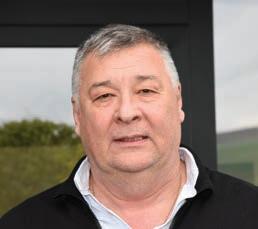
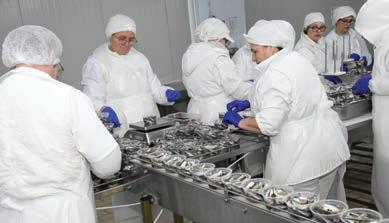
Danube river. The nutrients foster the growth of the phytoplankton on which the mussels feed so the mussels should grow rapidly. But, Mr Buhai says, we will evaluate the situation after a year to see whether we should expand the area or do something else.
For the moment Deltaica‘s core strength lies in its specialisation: producing fish products free from chemical preservatives. Instead, the company relies on natural preservatives such as salt, vinegar, lemon juice, and sugar. This approach caters to a growing consumer demand for clean-label, traditionally crafted foods. Mr Buhai focuses on recipes with deep roots in the Danube delta region, aiming to revive and preserve its regional culinary heritage. Our policy has been to achieve EU certifications of geographical indication, PGI (protected geographical indication) and TSG (traditional

speciality guaranteed) he says, and currently four of our products have been granted certificates with a fifth one in the evaluation phase. The PGI-certified products include carp and pike roe salads based on traditional Romanian recipes and smoked Danube shad, a herring-like fish that migrates upriver to spawn and is harvested during its short seasonal run from March to May; other products are carp pastrami, made from the fatty belly of the silver carp and seasoned with spices; and marinated sprat, a product formerly derived from the company’s own Black Sea catch, but now produced in the summer when the sprat catches from the Black Sea are landed. Otherwise, the company has been forced to use Baltic Sea sprat as raw material as catches from the Black Sea have not been very good. But if catches improve, Mr Buhai would like to source this raw material again from Romania and Bulgaria as the Baltic Sea product has become extremely expensive. The product still under
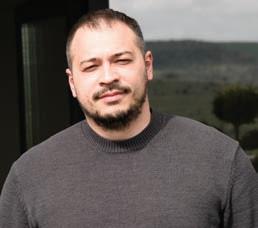
evaluation is a lightly salted and smoked fillet of sturgeon and Mr Buhai is confident that it too will soon carry the TSG label. The labels offer consumers an additional guarantee that the product strictly

follows a recipe and is subject to monitoring by an independent body that makes scheduled as well as unannounced audits.
Focus on the Romanian market allows a shorter shelf life
Working solely with natural ingredients to process the fish tends to shorten the shelf life. Fish roe salads can keep for two weeks and the marinated fish for up to 45 days as the vinegar used is made from wine and not synthetic acetic acid. The smoked items too have a 30-to-40-day shelf life. This makes the products difficult to export, says Mr Buhai, as it carries a certain risk. Moreover, demand on the Romanian market is good and meeting it is already difficult so exporting will only make that issue worse. The lack of exports does not prevent Mr Buhai from regularly visiting the world’s biggest fish and seafood trade show in Barcelona. Each year he comes there seeking suppliers and inspiration for new products. At Deltaica one to two new products

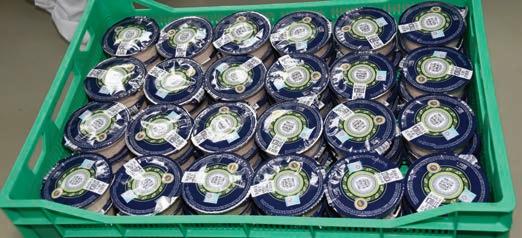
preserving agents and since we do not use chemical agents there is a limit as to how low we can go with the level of salt or the degree of smoking. Deltaica also reduced the plastic on its tubs of fish salad by replacing the lid with a metal foil.
plans to diversify his sales channels. Currently the company has two of its own shops and one option is to increase this number. Deltaica also supplies the biggest online retailer in Romania, a company with the logistical infrastructure to distribute across the country.
Deltaica currently operates at about 75 of its capacity and will increase this as production ramps up with
Cernica Street 19
820115 Tulcea
Romania
Tel.: +40 729 995 529 deltaica.seafood@gmail.com deltaica.ro
Pike and carp roe are made into salads following traditional recipes. These products have received TSG (traditional speciality guaranteed) certification from the European Commission. are launched each year, he says, so it is very useful to learn about the trends in the seafood industry. A recent product, for example, is a pate made by combining freshwater fish and marine fish. Pates are a convenient product because they are healthful and spreadable without the bones that sometimes make fish a hard sell. Products like the pate add value to freshwater species which are as tasty as marine fish but not as popular. Deltaica sources freshwater species like silver carp, common carp, and grass carp from large aquaculture operations in Lake Babadag, Lake Dranov, and other sites near the Danube Delta. These relationships ensure a stable and local supply of raw material while supporting the regional economy. Mr Buhai has found several recipes for freshwater fish products that are just as good as those for marine species. But common to both is an interest from the retail sector for products that contain less salt, less smoke, and make less use of plastic. Deltaica accommodates these requests as far as possible but as Mr Buhai points out, salt and smoke are natural
In addition to product-level certifications, Deltaica’s production facility holds IFS (International Featured Standards) certification, which is crucial for supplying large retailers. Though the company does not currently focus on exports, it adheres to international food safety standards due to its partnerships with major Romanian retailers such as Lidl, Carrefour, and Penny, which absorb 80 of the production. Products are mainly sold under the retailers’ brands with a fraction using the Deltaica label. Working with retailers is fruitful but tough as they drive a hard bargain and have little sympathy for unexpected increases in input costs such as when the price of Baltic Sea sprats suddenly spiked, so Mr Buhai
Managing director: Daniel Buhai
Activity: Processing Black Sea fish (sprats, turbot, dogfish, shad),
the innovative new items that it develops on a regular basis. The company represents a model of regional authenticity merged with modern food production standards. By focusing on natural processing, traditional recipes, and certified quality, the company has carved out a strong niche in the Romanian market. Its move into aquaculture reflects a forward-looking mindset that balances sustainability with business viability while remaining both a custodian of tradition and a quietly ambitious innovator in the world of fish processing.
Atlantic fish, and freshwater fish (pike-perch, catfish, perch, tench, carps)
Products: Fresh fish, fresh and frozen fillets, salted, marinated, and smoked products, salads
Markets: Romania
Customers: Retail chains, own stores (2)
Employees: 145
Facilities: 2,000 sq. m processing plant

Founded in 1941, the Research and Development Station for Fisheries (Stat,iunea de Cercetare-Dezvoltare pentru Piscicultura˘) in Nucet, Romania, has established itself as a vital institution in the field of freshwater aquaculture and fisheries research.
Over more than eight decades of continuous operation, the Research and Development Station for Fisheries has played a central role in shaping Romania’s aquaculture development through applied research, genetic selection, artificial reproduction, and technical support for fish farmers. Today, under the leadership of Director Miora Costache, the station remains the only national-level institution fully dedicated to freshwater fish reproduction and research, safeguarding a legacy of innovation, scientific knowledge, and participatory collaboration with producers.
Nucet’s institutional mission focuses on applied research in aquaculture technologies, genetic improvement of freshwater species, and dissemination of knowledge to support the Romanian fish farming sector. The station maintains the country‘s only live gene bank for freshwater species, which enables it to carry out artificial reproduction of key fish species and ensure the availability of genetically sound breeding stock. It also serves as a demonstration and pilot centre where innovative technologies are tested, refined, and adapted to farmers’ conditions.
A core function of the station is to support Romanian fish farmers by
providing fish fry and fingerlings, mainly of carp and Chinese carp species, as well as expertise in pond management, breeding strategies, and environmental monitoring. In recent years, its activities have increasingly focused on resilience, adapting aquaculture to climate change, and developing genetic lines that can tolerate higher temperatures, lower oxygen levels, and that are resistant to disease. Nino Marica explains that there are endemic fish species that are naturally resistant to higher temperatures and lower oxygen levels such as crucian carp and tench. There is already a natural hybrid between crucian carp and common carp and researchers at Nucet are looking at creating hybrids that combine the good eating qualities of carp with the resilience of other species.
The research programmes conducted at Nucet cover a range of topics, but two priority areas stand out: polyculture and integrated multi-trophic systems, and genetic selection under changing environmental conditions. One of the station’s key research directions involves the development of sustainable pond aquaculture using species polyculture, particularly combinations of common carp, silver carp, grass carp,

bighead carp, and paddlefish (Polyodon spathula). These integrated systems aim to replicate ecological balance by using species with complementary feeding behaviours. For example, grass carp feed on aquatic vegetation, while silver carp filter phytoplankton. This strategy maximises pond productivity without relying on expensive feed inputs and contributes to nutrient recycling.
The second major area of research is selective breeding for climate resilience. Through governmentfunded programmes, Nucet has begun selecting common carp strains that can tolerate higher water temperatures and low dissolved oxygen. In controlled trials, fish exposed to such conditions were monitored, and those demonstrating adaptation were selected as future broodstock. The
aim is to establish new carp lines with both environmental tolerance and strong growth performance.
genetic conservation
The station operates a state-ofthe-art artificial reproduction facility, including recirculating aquaculture systems (RAS) with controlled temperature and lighting. This enables Nucet to begin breeding activities earlier in the season, extending the production cycle and allowing fingerlings to reach market size within a single summer. In typical years, Nucet produces around 300 million fish larvae and 70 to 100 tonnes of one-year-old fry. These are distributed to fish farms throughout Romania, which often prefer larger juveniles to reduce losses
from bird predation and environmental stress. Large juveniles of 200 g can grow to 2-3 kg in one season from April to October. Today Nucet is the only Romanian institution breeding fish for on growing by inducing the broodstock, although some farms produce carp juveniles through natural spawning. In addition to carp species, the station breeds paddlefish, pike, pike-perch, European catfish, and various ornamental species including goldfish and koi. It uses a mix of natural and artificial reproduction methods, depending on the species.
For instance, Chinese carp are often bred using circular tanks that simulate riverine conditions, allowing fish to spawn more naturally. A fundamental asset of the station is its live gene bank, which preserves the biological material of Romanian freshwater fish. This includes three strains of common carp—Ineu, Fr sinet, and Rop a—each adapted to specific climatic zones. These genetic resources underpin the national capacity for restocking, adaptation, and resilience.
Nucet plays a hands-on role in supporting fish farmers, especially those operating in extensive and semi-intensive systems. Through its participatory approach, the station works directly with producers to design stocking strategies, determine pond carrying capacity, and select appropriate species combinations. It also collaborates on feed formulations, water quality monitoring, and health assessments. Farmers are involved throughout the research and demonstration cycle. They participate in experimental stocking trials, observe feeding practices, and receive training in disease

management and production planning. This collaboration helps bridge the gap between scientific research and on-farm implementation. It also ensures that the station’s outputs remain relevant to real-world constraints, such as low investment capacity, bird predation, water scarcity, and limited technical staff in rural fish farms. Nucet is often asked what value research brings to the farmer. Ms Costache emphasises that the benefits are both tangible and systemic: higher yields, lower mortality, improved environmental conditions, and access to improved seed stock. She also notes that farmers involved in research projects are often more committed and open to innovation, contributing to sectoral modernisation.
Climate change has profoundly affected aquaculture in Romania, especially in pond-based systems. Rising temperatures, prolonged droughts, and increased daynight temperature fluctuations have made fish reproduction and growth more unpredictable. According to Nucet’s data, the average water temperature has increased by 1.2–1.5°C since the 1990s, with growing frequency of extreme events. The warming water caused by climate change also has a beneficial effect in that it extends the growing season. The natural productivity of the ponds is a little higher and the fish feed (and can be fed) and grow for a longer period of time.
On the other hand, eng. Nino Marica, a researcher at Nucet, says the difference in water temperature between day and night are wider and more frequent than five years ago. These fluctuations negatively affect the maturation
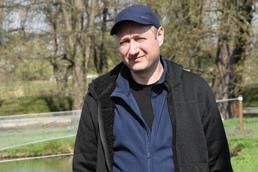
of the gonads and thereby the reproduction process. These changes have forced the station to adapt. For example, reproduction is increasingly carried out in controlled environments to counteract environmental variability. In some cases, reproduction is advanced by two months, allowing larvae to be stocked early and take full advantage of the spring productivity peak. The station is also piloting new systems such as floating cages in reservoirs, especially in areas where pond aquaculture is no longer viable due to water shortages. Floating cages allow more control over feeding, predator exclusion, and harvesting. They also offer a dualuse model, combining extensive stocking of grass carp in the wider lake with intensive production in cages.
Currently, the station occupies approximately 150 hectares, down from over 1,000 hectares before the sector was privatised in the 1990s. Despite this reduction, it maintains a complex infrastructure including incubation halls, research ponds, floating cage modules, water chemistry labs, genetics labs, and experimental units for polyculture and climate adaptation.
The station employs 52 staff members, of whom 16 are fulltime researchers. The others are aquaculture technicians and support staff, many with handson experience in fish handling and farm operations. This practical orientation is a key asset of the institution, enabling it to maintain tight feedback loops between research, demonstration, and dissemination.
Despite its central role, the Nucet station—and Romanian aquaculture more broadly—faces several structural challenges. These include low remuneration in the sector, difficulty in attracting young specialists, lack of subsidies for fish farms, and increasing exposure to market and climaterelated risks. The location of fish farms near villages or small towns and remote from big cities is also why the sector faces challenges finding young and educated workers. The war in Ukraine has also led to rising input costs, especially for feed and energy, and among the most burning issues is that of predation by birds and fish-eating animals. A dedicated aquaculture

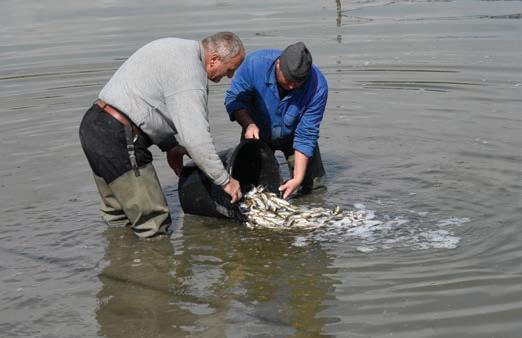
law has been adopted in Romania but has been sent back pending constitutional clarification. When implemented, it is expected to clarify ownership rights over water bodies, facilitate investment, and provide stable support for research institutions. The law could open the door to a stronger framework for innovation, conservation, and sector growth. Dr Costache thinks that the new law will finance a programme of aquaculture research which will benefit institutions like hers enabling them to develop and collaborate more closely with institutions in other parts of Europe. Nucet also maintains long-standing collaborations with universities and research institutes, including the University of Agronomic Sciences and Veterinary
Medicine in Bucharest and the Grigore Antipa Marine Research Institute in Constan a. These partnerships extend to international cooperation, including exchanges and joint projects with institutions in Turkey, China, and Georgia.
The Research and Development Station for Fisheries Nucet is a cornerstone of Romanian aquaculture science. It combines historical expertise, biological heritage, and practical innovation to serve the country‘s freshwater fish farmers. As the sector faces increasing pressure from climate change and economic uncertainty, Nucet‘s role becomes more important
than ever. Through its commitment to research, training, and collaboration, the station provides a rare model of how public
institutions can support sustainable aquaculture development grounded in science, tradition, and adaptation.
Str. Principala, 549, Com. Nucet Dâmbovita Romania
Tel.: +40 245 267 003 scp_nucet@yahoo.com statiuneapiscicolanucet.ro
Director: Dr Miora Costache
Activities: Fish breeding and research
Young fish production: 300 m larvae, 70 tonnes of 1 summer old fish
Research fields (selection): Fish nutrition, pathology, aquatic ecology, hydrobiology, genetics, conservation, aquaculture systems and technology
Employees: 52 of which 16 researchers
Infrastructure: Incubation halls, research ponds, floating cage modules, water chemistry labs, genetics labs, and experimental units for polyculture and climate adaptation

Globally, in the last 6 decades, the share of fisheries and aquaculture products (FAP) in the total sources of animal protein for human food has remained relatively constant varying around 33%. What has changed is the share of aquaculture products as animal protein source from 1.4% at the beginning of the 1960s to 17.5% in 2022. Although aquaculture growth rates recorded in Asia have decreased in the last decades they remained high in the first three years of the current decade (3.7%).
The growth rate of EU 27 aquaculture has stagnated over the last 30 years, with aquaculture production in 2022 at the same level as in 2000. In the European Union, of the total consumption of fishery and aquaculture products, only 7.5 comes from EU 27 aquaculture. From this perspective Romania is slightly better off, with fish consumption from Romanian aquaculture at 8.
According to FAOStat, fishery and aquaculture products consumption in Romania was 7.94 kg per capita per year in 2022, which is below most Central and Eastern EU countries and far below the EU average of around 24 kg per capita per year. Most of this consumption is based on marine capture fisheries (pelagic and demersal species). Unfortunately, the statistics do not reveal the structure of imports by source-whether aquaculture or capture fisheries—making it challenging to analyse competition for aquaculture products aside from the main important species.
From stagnation to opportunity: EU aquaculture in a global context
Although aquaculture in the European Union does not benefit from
a consistent and coherent policy like other agricultural activities, it continues to survive and is seeking ways to develop and increase production in order to reduce dependence on imports. Furthermore, overlapping crises in recent years have impacted and continue to affect economic life, particularly in strategic areas such as food security and the continuity of supply chains. Thus, aquaculture remains a central pillar of local and regional economies during times of restraint.
From this perspective, Romanian aquaculture is no exception. While globally, marine aquaculture of aquatic animals represents 37.8, in the European Union, it constitutes 79 of aquaculture production. In this context, the absence of a marine aquaculture sector in Romania’s Black Sea may seem surprising, especially given the 243 km of coastline. As previously described in a Eurofish Magazine (EM6/2009) issue covering Romania, marine aquaculture was in its pioneering phase and was based on one mussels and oysters farm functioning in a poorly regulated environment. Ultimately, the farm was closed, but the two aquaculture producer organizations began advocating for a proper regulatory system for marine aquaculture in Romania.
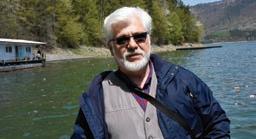
Private investment for aquaculture development, anywhere in the world, must be supported by pivotal policies such as a predictable, simple, and efficient regulatory framework, public support for R&D, public investments in infrastructure, and market organization. The involvement of aquaculture producers’ organizations in dialogue with the authorities, although lengthy, has contributed to normalizing the regulatory framework for aquaculture. On the other hand, there was intense and fruitful cooperation among professional associations, private aquaculture, and capture fisheries companies with the National Institute for Marine Research and Development
“Grigore Antipa” (NIMRD) in Constanta, which resulted in identifying science-based solutions to address marine aquaculture in the allocated zones for aquaculture in the Romanian Black Sea, considering the specific challenges of these areas (untimely storms, lack of bays, low salinity, and high temperatures during the summer, etc.).
Following the public tender procedure in 2024, aiming to lease 28 perimeters in the marine environment by the National Administration “Romanian Waters,” ten perimeters were awarded to five companies and a cooperative, three of which are for shellfish and seven for fish farming. The total leased area amounted to 60.06 hectares out of 166 hectares identified and microbiologically classified as suitable for aquaculture. It is worth
mentioning that the starting value of lease tariffs was the highest in the EU. One of the solutions targeting investments from public funds is provided by the productive investments in aquaculture component of EMFAF 2021 - 2027, which launched the first call for applications in early April, with a total allocation of €63,829,970. It is expected that at least these companies interested in marine aquaculture development will take advantage of this opportunity, especially in the turbulent economic and social context of the region.
Another component of public investments necessary to support marine aquaculture development is the onshore infrastructure, which is mandatory for every offshore economic operation. For the moment, this problem has not yet been resolved and will likely generate additional costs, as competition with other more financially robust economic activities will be tougher.
Freshwater aquaculture, which is characteristic of Romania and utilizes more than 20 species of fish, is experiencing a visible trend over the last ten years: the rapid growth of trout production, which reached a sold quantity of 3,527 tonnes in 2022, representing a 228.7 increase compared to 2015. During the same period, imports of trout decreased by only 5 in quantity. These figures indicate a strong rise in consumption for this group of species. Farmers have adapted to local conditions, developing traditional raceway systems, RAS farms, and, especially, cages on hydropower dam lakes, all of which have contributed to increased production. Trout farming dominates the EU freshwater aquaculture sector as it focuses on monoculture intensive production

methods, using well-known and easily manageable technology with a relatively short production cycle (around 18 months) since the market size is 300-500 grams per individual, which is highly dependent on the commercial feeds market. Relatively low net profit rates compel investors to seek large production units, thus providing financial space for further investment. As a new market opportunity arises for rainbow trout grown in sea cages to a size of around 3 kg per individual, some companies involved in freshwater trout production are exploring diversification by developing marine cage systems in the Black Sea. This will allow them to challenge the salmon market, which appears to be more promising in terms of revenue through value -added processing.
Another option that Romanian aquaculture farmers are exploring to maintain their economic viability is diversifying their production activity towards options that increase the added value of their output. The Multiannual National Strategic Plan for Aquaculture, revised in 2023, continues to stress the importance of retaining a significant share of the value chain revenues for the benefit of the farmers, leading to the adoption of various strategies. One of these aims to add value through processing facilities, primarily targeting regional markets. In addition to the EU Registered and Protected Geographical Indication (PGI) and Traditional Specialities Guaranteed (TSG) registers, which contain only two Romanian aquaculture products (a smoked bighead carp and a carp roe salad), farmers are pursuing a simpler recognition scheme implemented by the Ministry of Agriculture and Rural Development
under the National Register of “Certified Traditional Products.” This register includes 789 products, of which 25 are fish-based, most originating from aquaculture. Additionally, medium-scale processing units have been developed using European Maritime and Fisheries Funds from 2014 to 2020, in an effort to diversify the range of products delivered to local and regional markets while attracting new categories of consumers to farmed products. This activity is further supported by an increasingly wide array of local fairs, exhibitions, and events that promote traditional agricultural products, in which farmed fish has its rightful place.
As aquaculture is largely dominated by SMEs that have difficult access to large retail chain outlets, more farmers are developing alternatives to solve the final part of their production cycle: sales. One solution, also supported by the EMFAF 2021 - 2027, is the development of farmers ‘ own fish shops, which are very popular in Romania. These shops allow direct contact with the consumer, facilitate the dissemination of information about the production methods of a certain farm, create a direct bond between the farmer and the end user, and support the shortest supply chain, ensuring the genuine freshness of the products. This is considered one way to increase consumer trust in farmed products
and regain social acceptability for aquaculture. Following the same approach to enhance visibility and confidence in aquaculture, farmers have begun to develop aquatourism, scientific tourism, and fish restaurants at the farm level, diversifying not only their income sources but also adding value to their production and harnessing the potential of ecosystem services associated with fish farming, especially in traditional earthen ponds. This open approach to the public, especially families, and educational institutions from primary schools to academia ensures transparency while creating new generations of well-informed consumers and potential young practitioners of a centuries-old profession.
Romanian aquaculture still has immense growth potential, and realizing this potential depends solely on political decisions at both national and EU levels, such as direct support, reduced bureaucracy, and fair access to space and water for sustainable farming to stimulate investment, as well as the re-professionalization of this activity through the horizontal development of vocational education, training, and applied research. There remains hope that a Common Policy for Aquaculture, offering the same financial instruments as those for the rest of agriculture, would significantly improve aquaculture’s attractiveness as a business and mark a starting point for sustainable production growth, which is an important aspect of increased resilience and of the overarching goal of food security.

To prevent overfishing inland fishing quotas need to be adjusted to reflect the state of the stocks. Monitoring the health of these resources is just one of the tasks carried out by the Research and Development Institute for Aquatic Ecology, Fisheries, and Aquaculture that allow Romanian policy-makers to take science-based decisions.
Founded in 1981 by decree under Nicolae Ceau escu, the Research and Development Institute for Aquatic Ecology, Fisheries, and Aquaculture (ICDEAPA) in Gala i is one of Romania’s leading institutions in the fields of freshwater aquaculture, inland fisheries, aquatic ecology, and fish product development. Its creation was closely tied to Gala i as a hub for fisheries science and industry and built upon the region’s strategic location along the Danube and its proximity to the former Brate lake system.
The establishment of the institute responded to the political desire to decentralise fisheries research, which until the late 1970s had been concentrated in Bucharest. From the start, the institute’s mission encompassed aquaculture technologies, freshwater fisheries management, fish product development and commercialisation, and the breeding of high-quality juvenile fish for restocking. It continues to combine applied research with a national role in data collection, environmental monitoring, and policymaking support. The institute operates under the Romanian Academy for Agricultural and Forestry
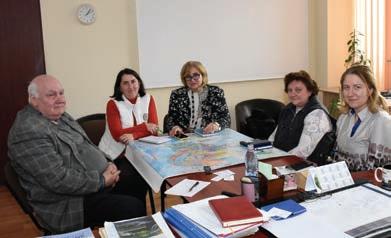
Sciences, giving it a unique position among research bodies. It is one of three key national fisheries institutes, collaborating closely with the Nucet Research Station and the Marine Research Institute in Constan a.
Located near the Moldova and Ukraine borders, ICDEAPA manages both a central office and a 400-hectare research station close to the 2,000-hectare Brate lake. In its early days, the institute was part of a larger network of statesupported fish production facilities and fisheries-focused education institutions. The nearby University of Gala i hosts the country’s only
specialised faculty for fisheries engineering, with which ICDEAPA maintains close academic and project-based links. The Brate research base is equipped for experimental aquaculture, broodstock development, restocking, and water quality testing. ICDEAPA is also active in outreach, including ad hoc training for fishermen and hosting doctoral students from Romania and abroad.
The institute’s main research activities span four areas: aquaculture,
freshwater fisheries, fish product development, and aquatic ecology. Its laboratories work on technological innovation in aquaculture, fish disease control, broodstock genetics, environmental impact monitoring, and stock assessment. In recent decades, ICDEAPA has expanded its work into new challenges such as the effects of climate change, economic viability of fish farming, and ecosystem-based management of inland fisheries. Climate change impacts such as drought and warming water combined with predation by birds, cormorants and pelicans in particular, and competition from countries
with lower costs of production affect Romanian aquaculture production, says Dr Neculai Patriche, ICDEAPA’s deputy scientific director. Another particularly active area of research is the development of modern aquaculture systems, including closed-loop recirculating aquaculture systems (RAS). The institute has helped design several RAS facilities, including in Br ila and Timi oara, and supports their uptake through technology transfer and training.
ICDEAPA has a formal mandate to assess fish stocks and propose annual catch quotas for the Danube and the Danube delta. The stock assessment unit monitors over 1,000 kilometres of river and associated wetlands and tributaries, including the Prut and Siret tributaries for commercially important species. Each year, researchers conduct scientific fishing campaigns, collect biological samples, and integrate and harmonise catch data from fishers, administrators, and historical records. Quotas are adjusted annually by sector and species based on observed trends. The principal commercial species include common carp, perch, pike, pike-perch, and Pontic shad (Alosa immaculata). ICDEAPA’s assessments, reviewed by the Romanian Academy and the Ministry of Agriculture and Environment, guide the issuance of ministerial orders regulating inland capture fisheries practised by the approximately 5,000 inland fishers. The gear they use is typically traps, drifting gill nets on the river, and stationary gill nets in lakes.
Declining catches have been observed in several areas, largely due to hydrological changes,

climate stress, and anthropogenic impacts such as inland navigation and damming. And while illegal fishing exists, it is considered less significant than these structural pressures. The war in Ukraine too has an impact— from vessels that have moved to safety to Romanian ports creating more traffic on the Danube, from attacks on Ukrainian ports that create pollution in the river, and from dredging in the Ukrainian Danube. As a result quotas are adjusted each year usually downwards though in some sectors they are also increased.
One of the institute’s flagship programmes is the breeding and restocking of native sturgeon species. These include beluga ( Huso huso ), Russian sturgeon ( Acipenser gueldenstaedti ), stellate sturgeon ( A. stellatus ), and sterlet ( A. ruthenus ). ICDEAPA has also worked with the Siberian sturgeon ( A. baerii ), introduced from Soviet hatcheries in the 1970s via France. Sturgeon breeding at the institute dates to the early 1990s, and artificial reproduction techniques developed in Gala i have since been widely adopted. The institute runs restocking campaigns in the Danube, tags fish for migration studies, and collaborates with both Romanian and European partners. The research spans broodstock management, larval rearing, nutrition, and adaptation of sturgeon to RAS systems.
Another key function of ICDEAPA is to monitor water quality and the ecological status of freshwater ecosystems. The aquatic ecology and environmental protection laboratory analyses microbiological, hydrobiological, and hydrochemical parameters in lakes,
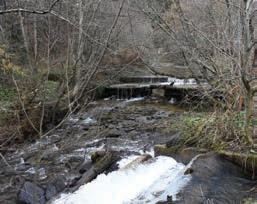
One of the key functions of ICDEAPA is to monitor water quality and the ecological status of freshwater ecosystems by analysing microbiological, hydrobiological, and hydrochemical parameters in lakes, rivers, and fishponds across Romania.
rivers, and fishponds across Romania. This work supports both research and regulatory compliance. The scientists study phytoplankton, zooplankton, and benthic fauna to assess trophic status and ecological integrity. They also examine climateinduced shifts in aquatic productivity, which affect fish growth and reproductive success. The lab runs Romania’s only functional photobioreactor for microalgae production, supporting experiments into algae-based fish feeds and biostimulants.
ICDEAPA has been at the forefront of documenting the effects of climate change on inland aquaculture. Increasing water temperatures, irregular rainfall, and more frequent droughts are all affecting pond productivity and fish health. Dr Patriche describes a model that the institute has developed for assessing the vulnerability and viability of fish farms under climate stress, which includes over 30 environmental and socio-economic indicators. This system,
initially paper-based, is being converted into a digital tool to guide investment decisions. It helps determine whether farms should adapt, relocate, or suspend operations based on future scenarios. The tool is already being used by fish farms in Cluj, Br ila, and other parts of the country. The model delivers reliable results but is constantly being tweaked to improve accuracy even further.
To improve sustainability and reduce costs, the institute is researching alternatives to fishmeal-based feeds. In particular, it is experimenting with spirulina and other microalgae as protein sources. Efforts are being made to optimise the digestibility of these algae through biological processes, avoiding chemical treatments. Other nutrition trials aim to enhance fish meat quality by modifying feed composition, targeting
higher omega-3 content and better flavour. The institute is also investigating immunological responses to probiotics and symbiotic compounds as a way to reduce antibiotic use in fish farming. This research is especially relevant for high-value species such as sturgeon and trout. Further research is also being conducted to increase the proportion of unsaturated acids in fish meat by changing the fish diet and the density at which the fish are stocked.
ICDEAPA plays a national coordinating role in fisheries and aquaculture data collection. It maintains a central server system where data from farms and fishers are processed, verified, and standardised for use in EU and international reporting frameworks such as the GFCM and STECF. The institute also supports the Romanian National Agency for Fisheries and Aquaculture (ANPA) and liaises with EUMOFA, the European market observatory for fisheries and aquaculture products, via designated national correspondents. However, discrepancies between different data systems and delayed data flows from national agencies sometimes create inconsistencies in official statistics. The institute is therefore advocating for a unified data platform that can generate reports in the format required by each authority, to streamline Romania’s contribution to EU databases.
Though not a teaching institution per se, ICDEAPA has long-standing partnerships with universities, particularly the University of Gala i. Many staff hold dual appointments or have previously


taught in the university’s fisheries engineering faculty. Research projects are often carried out jointly, and the institute hosts PhD candidates from Romania and abroad for thesis work. Beyond academia, ICDEAPA has trained hundreds of Romanian fishers during the post-accession period, supporting compliance with EU fisheries and aquaculture regulations. It continues to offer short courses on request, particularly on fish health and pond management.
The institute also contributes to national and regional development and helps fish farmers diversify their sources of income by designing multi-functional aquaculture projects. One notable example is a private initiative near Foc ani, combining sturgeon aquaculture, restocking, eco-tourism, and gastronomy. The conceptual design and technical plans were developed in-house by ICDEAPA researchers. Past applied research has also investigated the
potential for aquaculture in irrigation canals. Trials conducted on the Gala i irrigation channel demonstrated the feasibility of both cage farming and restocking strategies, offering additional income sources for landowners and water managers.
ICDEAPA’s work is constrained by limited public funding, fragmented data governance, and the high operational costs of
experimental research. Nonetheless, the institute continues to serve as Romania’s scientific backbone in inland fisheries and aquaculture, providing essential inputs to policy and industry. As climate change accelerates and aquaculture modernises, the institute‘s multidisciplinary expertise and broad research portfolio position it as a key actor in navigating the transition. Its legacy, dating back to the industrial ambitions of the 1980s, has evolved into a flexible, collaborative, and environmentally attuned institution committed to safeguarding Romania’s freshwater fishery resources.
Romania
Tel.: +40 236 416914
contact@asas-icdeapa.ro asas-icdeapa.ro

The trout farming cooperative, Pastravul din Tara Ta, comprises four companies which together have an annual output of around 1,000 tonnes account or approximately 25% of Romania’s total trout production. The cooperative plans to take fish from its farms and place them in cages in the Black Sea for on-growing.
Pastravul din Tara Ta, a rainbow trout farming cooperative, operates six aquaculture facilities located primarily around the Carpathian Mountains, where they have access to abundant natural water sources. Or at least they used to be abundant. In recent years, climate change has threatened the flow of water in at least one of the sites. Luca Todosia, whose family owns three of the cooperative’s sites, says that at their site in Prahova county the water flow to the farm went from 200 L per second to somewhere between 50 and 90 L per second. To continue farming the density of fish in the ponds was lowered and the water was aerated heavily. It is not economical, Mr Todosia says, but there is really no alternative. Trials were also made to circulate the water in a bid to use less, but this affected the quality of the fish and were therefore stopped.
The cooperative recently acquired space in the Black Sea where it plans to on-grow rainbow trout in cages. The fish will be harvested from the inland farms and driven to the Black Sea site where they will be introduced into the cages. This has long been the vision of the trout farming sector, but it is only recently that the necessary
legislative framework has been put in place. The cooperative collaborates closely with the National Institute for Marine Research and Development “Grigore Antipa” in Constanta, where Dr Vitor Nita, the head of the Marine Living Resources Department is conducting trials growing trout in tanks of salt water. In the Black Sea the trout will be kept in the water from around September to May when the water temperature is acceptable to the fish. The combination of the salt water and the rougher conditions in the sea gives the fish a vast appetite. They eat a lot and grow rapidly reaching 2 to 4 kg depending on their size when introduced into the cages. In contrast, in freshwater they can take a year to reach 800 g. The plan is to introduce fish of 300, 600, and 900 g into the cages and to monitor their growth and wellbeing.
Türkiye has had spectacular success raising trout in cages in the Black Sea for some 15 years now, but it was initiatives by Croatia and Albania in the Adriatic that inspired Romanian trout farmers to try growing trout in marine cages. Luca Todosia says that they have leased space in the Black Sea for cages which they hope to populate with young trout in 2025 itself. The fish will come from the family farms where fish are raised from imported eggs. The eggs are certified disease free and are fully traceable both up and down the supply

chain, says Mr Todosia, thanks to an electronic system of farm management that all the members of the cooperative use. This also ensures complete biosecurity at the site. The eggs are triploids so the fish are sterile and even if they escape into the environment they will not reproduce. Producing our own eggs is theoretically possible, says Mr Todosia, but it would be too expensive in terms of time and investment to be worth it, so we buy the eggs from suppliers in Denmark, Poland, Italy, and the United States and produce about 2.5 million fingerlings a year.
The six farm sites in the cooperative including one in a lake
and the one on the Black Sea are owned by four farmers and current production amounts to 1,000 t out of a total Romanian trout production of 4,000 tonnes. Mr Todosia plans to study aquaculture and sustainability in Denmark when he finishes his undergraduate programme at the University of Brasov. He sees the trout sector growing in the coming years driven in part by the activities of the cooperative which plans to expand with another lake-farming site. At the Pastravaria Dejani site in Brasov, also owned by the Todosias, all the fish produced conform to the requirements of Filiera Calitatii Carrefour , the retailer’s brand representing products of the highest quality. This guarantees traceability from the egg
to the consumer and that no animal protein, nor any genetically modified soy is used in the feed. In the tanks, the fish are maintained at a lower density than in conventional farms, and regular water quality checks are mandatory. The feed conversion ratio is 1.09 meaning 1.09 kg of feed results in 1 kg of fish meat which, according to Mr Todosia, is not bad for the second year of production. The water is drawn from a river with a flow of 600 litres per second. This flows into the basins holding the fish which are built at different levels so that the force of gravity is enough to propel the water into the basins and then out again and back into the river. Fish are typically introduced into the basins at 3-5 g and grown to up to a kilo in weight and while whole fish on ice is the main product, Mr Todosia is trying to popularise the consumption of fillets due to the ease of handling and because it is more lucrative to sell fillets than whole fish. Another product is hot-smoked fillets with condiments which has also proved a success. The cooperative has recently signed contracts with other supermarkets in anticipation of the greater volumes of fish that will emerge from the new lake farm and from on-growing fish in the Black Sea. The cooperative sells all the fish that is produced by its members and also buys the feed. Buying the feed in bulk means that the price is more favourable than those the individual members would get, and farmers who are not members of the cooperative or are only affiliated also buy feed through it. Because the feed quality is critical to the quality of the final product the main suppliers are two reputed Scandinavian feed producers one of whom the cooperative has been working for many years.

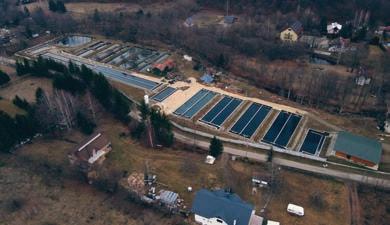
The production site at lake Oasa in Alba was established in 2023 with the help of Italian consultants and the first full year of production in 2024. The lake is at an altitude of 1,400 m and is fed by water from the mountains so there is little or no risk of disease. With enough feed the fish can grow to 1.5 kg. While the lake is not currently threatened by rising temperatures or a lack of water, Mr Todosia notes that rivers in the vicinity of Dejani, the Brasov site, have held less and less water over the years. This farm too was built with Italian expertise contributing to the design and is equipped with multiple filtering systems to ensure the welfare of the fish and that the water returned to the source is free of any pollution. Production currently amounts to 200 tonnes a year and is managed essentially by two people. The cloud-based farm management software monitors all the farm parameters issuing warnings when manual interventions are
needed and thus allows for highly efficient production. The river that feeds the farm also serves a small hydropower station upstream from the farm and water for the fish production comes directly from the hydropower plant rather than from the river. Because of this the farm can manage without a drum filter as the water is cleaned of debris, twigs, leaves, etc. at the hydropower plant. Moreover, for the same reason, wild trout in the river cannot enter the farm and compromise biosecurity.
The peak season in Romania for fish consumption is in the winter but at the cooperative fish are harvested at regular intervals
Directors: Vasile Todosia, Luca Todosia
Member of cooperative Pastravul din Tara Ta
Tel.: +40 747 982176 vtodosia@gmail.com
Farm production: Rainbow trout
throughout the year and delivered to a warehouse for distribution throughout the country to those Carrefour stores that have a fresh fish counter. Within 24 hours of harvesting the fish is with Carrefour so it has the longest possible shelf life. The cooperative is the biggest supplier of fish to Carrefour in Romania and with the envisaged expansion of production its role is only likely to get more important. Its approach, combining high quality eggs, manual feeding precision, environmentally sustainable practices, strict quality assurance protocols, and planned expansions, will enable it to maintain its leading position in Romanian trout aquaculture.
(200 tonnes)
Product size: 1 kg
Processed products: Fresh gutted fish on ice, fillets, smoked trout
Certifications: Filiera Calitatii Carrefour Farm employees: 2

The Danube Delta National Institute for Research and Development (DDNI) in Tulcea is one of Romania’s foremost environmental research institutes, dedicated to the sustainable management, restoration, and conservation of the Danube Delta and other wetland ecosystems.
With a legacy dating back to 1926, DDNI has evolved into a modern research institution at the intersection of biodiversity science, ecological restoration, and advanced environmental monitoring. The knowledge that the institute’s researchers produce is vital to understand and mitigate some of the influences that threaten the health of the delta’s ecosystems.
The history of DDNI is deeply entwined with the broader development and shifting views on the Danube Delta. In the socialist era, the delta was regarded primarily as a source of exploitable natural resources. An economic centre for the Danube Delta was established in 1970 to coordinate large-scale industrial uses of its land and water, including agriculture, reed harvesting, forestry, and fisheries. The scientific activities of the time were subordinated to these economic priorities.
The transformation began in 1989, amid a broader democratic and environmental awakening. With the designation of the Danube Delta as a Biosphere Reserve in 1990, DDNI shifted decisively towards ecological research and environmental protection. This change in orientation was driven
in part by scientists like Dr Iulian Nichersu, who advocated for the prioritisation of ecological health and biodiversity over industrial development.
Today, DDNI is structured around five main departments: biodiversity conservation and sustainable use of natural resources; ecological restoration and species recovery; geomatics and geoinformation systems; laboratories and research stations; and transborder and emergent diseases and zoonoses. These departments collaborate across disciplines to tackle pressing environmental challenges in the Danube Delta and other significant wetland regions, such as the Danube floodplain and tributary systems.
The institute’s mission is to conduct scientific research that supports both conservation and the sustainable use of natural resources. This includes longterm environmental monitoring, development of ecological restoration methodologies, spatial planning, environmental impact assessments, and technological innovation. A dedicated dissemination department ensures the translation of research findings
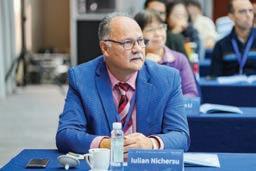
into policy and practice, while informal research groups delve deeper into topics such as sturgeon conservation, invasive species, and molecular ecology. Stock status is another subject that is studied by researchers at DDNI. Dr Nichersu points out that climate change can have an impact on stocks because in times of drought when water levels fall the sun can heat up the water to the point where it gets too warm for the fish to spawn. We are seeing declines in stocks from year to year, he says, and we need to study this to try and find solutions.
In recent years, DDNI has invested significantly in molecular biology and genetics. One of its newest
laboratories, led by Daniela Porea and Daniela Holostencu , focuses on genetic research to assess biodiversity and preserve native species, particularly in the face of threats from habitat degradation, climate change, and invasive species. Among the most promising innovations at the institute is the use of environmental DNA (eDNA) to assess both the presence and abundance of aquatic species. The technique is especially valuable for monitoring rare or elusive organisms, such as sturgeon, without the need for invasive sampling. As Dr Porea explained, while the methodology is still evolving and dependent on the quality of reference databases like GenBank and BOLD, DDNI is contributing new local data and sequences to improve these global resources. Their ongoing eDNA


project focuses on fish and macroinvertebrates. For fish, results have already demonstrated the viability of the technique, revealing rich species diversity. The macroinvertebrate data has been more difficult to interpret, due to incomplete international genetic databases. As a result, the institute is working to expand the DNA reference material for local species, enabling more accurate biodiversity assessments in future studies.
The plight of sturgeon species in the Danube has become emblematic of broader ecological challenges. Overharvested for decades and blocked from their natural spawning grounds by the Iron Gates dam, sturgeons— especially the Russian sturgeon (Acipenser gueldenstaedtii)—have suffered dramatic population declines. Although fishing is now prohibited, poaching continues due to the high market value of wild caviar. DDNI is at the forefront of efforts to conserve sturgeon populations. Its researchers
in the lower Danube can produce results. In 2022, DDNI scientists detected wild-born Russian sturgeon for the first time in over a decade, suggesting that carefully targeted restocking and ecosystem restoration efforts can yield tangible conservation outcomes.
multiple ecological restoration projects, including the rewilding of former agricultural polders like Babina Island. However, the institute recognises that restoration is not static. Landscapes continue to evolve, and long-term monitoring is essential. Restoration designs must therefore include mechanisms for periodic reassessment and re-intervention.
argue that restocking must be balanced with habitat restoration and stringent law enforcement. Artificial reproduction can increase numbers but risks diminishing genetic diversity if the population base is too narrow. The institute thus supports limited, carefully managed restocking while prioritising natural recovery and spawning, as well as habit restoration and maintenance, fishing prohibitions, and law enforcement. These efforts will not only benefit sturgeons but also other species. Projects have shown that habitat improvements
Climate change has added a new layer of urgency to DDNI’s work. Decreased water levels in the Danube, rising air and water temperatures, and altered seasonal precipitation patterns are affecting fish reproduction and wetland ecology across the delta. As Dr Nichersu explains, the impacts of even small temperature increases can cascade through entire ecosystems. More heat means more evapotranspiration, which stresses water availability, reduces plant productivity, and weakens the food web. Saltwater intrusion, exacerbated by sea level rise and declining groundwater levels, is threatening coastal wetlands and saltmarsh ecosystems. According to DDNI, these areas are among the most vulnerable to desertification. To address such risks, the institute promotes adaptive and forward-looking restoration strategies. Since 1993, DDNI has led
DDNI is also a core partner in the Danubius-RI (Research Infrastructure), an EU-funded project establishing a pan-European platform for integrated riversea system studies. Based in Murighiol, the new centre will house laboratories for aquatic ecosystem research, aquaculture systems, and water quality monitoring. When complete, it will provide continuous environmental data from 52 points across the Danube Delta. This infrastructure will support advanced modelling and analysis using artificial intelligence and satellite data, enabling researchers across Europe to access and interpret environmental changes in real time. For DDNI, this represents a strategic opportunity to centralise its data, expand its research
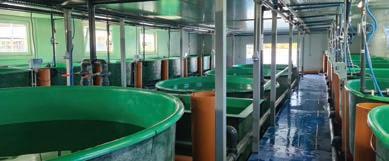
collaborations, and contribute to broader European objectives under the EU’s Mission Ocean and Blue Economy frameworks.
Each year, DDNI hosts an international symposium focused on its three core areas—biodiversity conservation, ecological restoration, and geomatics—as well as related topics such as the circular economy, the European Green Deal, and marine spatial planning. The institute also organises workshops for international project partners, civil society, and local stakeholders. These events provide a platform to share findings, refine methodologies, and align research with evolving policy demands. Although DDNI is not a teaching institution, it maintains partnerships with Romanian universities and offers practical placements for undergraduate and postgraduate students. The institute recently hosted Erasmus students and hopes that closer collaboration with academic institutions will help train the next generation of wetland ecologists and geneticists. Dr Nichersu has repeatedly advocated for the establishment of a university branch in Tulcea or Murighiol, arguing that sustained research investment must be accompanied by parallel investments in education. Without a pipeline of trained specialists, DDNI and similar institutions will struggle to maintain their capacity.
Fisheries remain a traditional livelihood in the Danube Delta, though the sector is under increasing pressure from declining fish stocks. Commercial fishing is regulated through licensing and quotas set by the Biosphere Reserve Authority, based on assessments of stock biomass. Despite quotas being

lowered over the years, the number of licences has remained largely unchanged, leading to challenges in aligning fishing capacity with ecological sustainability. Aquaculture, once a prominent activity in the delta, has largely collapsed. After 1990, the closure of energyintensive fish farms and the end of state subsidies led many former aquaculture workers to enter commercial fishing. However, DDNI is now testing new models of sustainable aquaculture, using recirculating aquaculture systems (RAS) in experimental facilities like the one in Caraorman. These efforts aim to demonstrate that modern aquaculture can support livelihoods while reducing pressure on wild stocks.
Invasive species are an emerging concern for DDNI. Non-native crayfish introduced from Ukrainian aquaculture ponds have established themselves in parts of the delta, while species like Perccottus glenii—a small predatory fish that feeds on fish eggs—are threatening native species such as perch. The institute uses eDNA to detect and monitor the spread of these species and is working to expand marker databases so that new invaders can be more easily identified in environmental samples. Although some invasive species have commercial value—such as certain crayfish now found in local gastronomy— DDNI warns that the ecological risks often outweigh the potential benefits. Effective detection, monitoring, and public awareness are crucial to prevent further spread and ecological disruption.
of the Danube Delta
Throughout its work, DDNI maintains a long-term perspective,

inspired by the vision of Grigore Antipa. This means not only restoring ecosystems but also building a comprehensive data thesaurus for future generations, embracing new technologies, and confronting environmental threats with both urgency and scientific rigour. As the institute approaches its centenary in 2026,
it continues to play a vital role in shaping sustainable policy and research in the Danube Delta. Its integrated approach—linking genetics to geomatics, conservation to aquaculture, and research to practice—makes it a model for researchers studying wetland and river delta systems around the world.
165 Babadag street, Tulcea 820112 Romania
Tel.: +40 240 524 546 office@ddni.ro ddni.ro
Denmark’s main shellfish processor clobbered by drastic fall in mussel supply
Denmark’s biggest processor of mussels is suffering from a shortage of raw material that has rendered more than two thirds of its processing capacity redundant. Environment-related restrictions and bureaucracy are among the causes of the situation.
Mussel production in Denmark comes from both capture sheries and from aquaculture. In the ve years to 2023 annual output from capture has been two to four times that of culture. But while production of farmed mussels has increased fairly steadily over the years, that from capture has shrunk from 45,000 tonnes in 2015 to 17,000 tonnes in 2023, a trend that is a source of concern for companies such as Vilsund Blue, a processor of mussels based in Nykøbing Mors on the Limfjord in Jutland.
Lack of mussels has led to consolidation in the industry
Jan Christensen, COO of Vilsund Blue, says the falling production has meant a steep drop in the raw material the company needs. As a result, from five companies involved in mussel processing 25 years ago, there is today just one, Vilsund Blue, and that too is operating at only 30 of its capacity. Part of the issue is restrictions introduced to mitigate the impacts of climate change. These have meant that only 28 of the Limfjord is available to fish mussels and only at certain depths, the rest is designated a nature protected area. The depth restrictions also contribute to the falling catches and the lack of raw materials, says Mr Christensen. The mussels live at depths of between 3 and 8-9 m but for the last couple of years we
have been prohibited from fishing at depths less than 5.6 m.
Mr Christensen feels that the mussel fishing industry is being made a scapegoat. Danish waters are under pressure from nutrient run-off from agriculture and from inadequately treated sewage, however mussel dredgers and the plumes of sand they generate are highly visible, so they make an easy target for restrictions. But, he says, the dredgers operate in areas where there is little or no vegetation because that is where the mussels are. They are not found in highly vegetated areas, they are present on sand banks. That there are three ministries with a voice in the administration of the activity probably also leads to differences of opinion with the sector. In addition, further complications may arise if there are divergences between the estimations of the two scientific institutions that are involved in assessing the sector and its environmental impact. Driving the whole process is EU legislation, such as the habitats directive and the water framework directive, that Denmark is obliged to follow. Mr Christensen is also frustrated at the slow processing of cases at the agency responsible for issuing fishing licences. If it takes a month or two to issue a licence it means our supply of raw materials is also delayed by the same period and we are then unable to fulfil the contractual obligations we have with big companies across Europe which leads
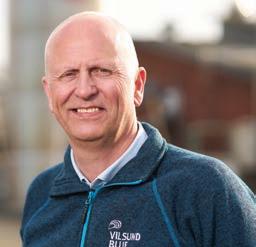
to fines, reputational damage and, most threatening of all, the takeover of our markets by nonEU players from countries where standards are looser than ours.
A forum to discuss these issues exists in the form of the shellfish committee which brings together representatives from the ministries, agencies, research establishment, industry, and NGOs. However, Mr Christensen complains that the character of these meetings, which are held roughly twice a year, has changed. Instead of discussing things as a group as we did in the past, the
meetings are now used to inform us of what is planned, what has been done, and what has been decided. The agenda of the last meeting, he says, had a single point for discussion, the rest were for information. The implication seems to be that environmental considerations outweigh other aspects of the fishery, and that the industry must learn to live with conditions it does not like. Henrik Nielsen, who heads Foreningen Muslingeerhvervet, the mussel industry’s representative body, concurs. The numerous NGOs in the shellfish committee tend to drown out the voice of the industry, he feels, with the result that neither the challenges facing the industry nor the potential solutions get discussed.
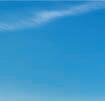
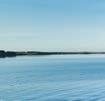
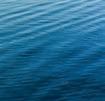
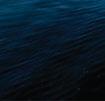

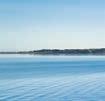


Dredging may not be the most environmentally friendly way of fishing, but it is legal and highly regulated. It is the main method used to fish mussels and other shellfish in the Limfjord. Cockles and mussels are fished with a dredge, the frame of which may not weigh more than 50 kg and may not have a width of more than 1.5 m. Vessels typically use two dredges on either side of the vessel. However, oyster dredges are limited to a weight 35 kg and a width of 1 m, and a vessel may only have a single dredge on either side. In a 2024 report on the status of the shellfish fishery in the Limfjord, Jens K. Pedersen,
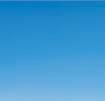



a professor at DTU Aqua and director of the Danish Shellfish Centre in Nykøbing Mors, notes that there are restrictions in the form of closed areas in the Limfjord as well as a minimum depth of over 4 m to protect eelgrass beds. Eelgrass takes a long time to re-establish if disturbed and is an important indicator of ecological status, so areas with eelgrass are out of bounds for mussel dredging. Together with Vilsund Blue, Alex Mikkelsen, an entrepreneur, owns Seafood Limfjord, a company that farms mussels on longlines in the Limfjord. He acknowledges the importance of protecting eelgrass but, he says,


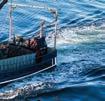

there is virtually no eelgrass in the Limfjord, so excluding large tracts from mussel farming or fishing is unlikely to serve any eelgrass conservation purpose. He is particularly concerned about ideas to create a 100 m buffer zone which, if implemented, could affect up to a quarter of his lines. According to Mr Nielsen eelgrass-related restrictions cover not only existing beds but also areas where the plant could potentially grow. But, he says, this potential will not be realised as long as nutrients from agriculture and untreated sewage continue to enter the Limfjord. The industry is thus being penalised for no fault of its own.
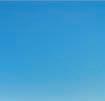

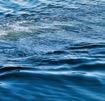
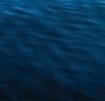
Spatial restrictions are supplemented with other limitations that restrain the capacity of the motors and the size of the boats and limit the catch to 45 tonnes per week per licence. As a bycatch, cockles may not exceed 49 of the total catch. Temporal restrictions prohibit fishing at night until an hour before daybreak. Moreover, all vessels shall be equipped with a black box (which monitors location, speed, and if the dredges are active) and those above 15 m shall have AIS (automatic identification system). Logbooks are mandatory and for vessels above 12 m they must be electronic. Catches
must be reported before the vessel arrives in port. Activity in Natura 2000 areas must be reported before the trip starts and there are limitations on the number of vessels that can fish simultaneously in these areas. Calculations based on data from the black boxes and the logbooks show that since 2016 when dredging affected 49 sq. km in the Limfjord, the operating area has decreased to 29 sq. km in 2023, while the number of times an area is dredged increased from 2.4 to 3.1 over the same period. The Limfjord is some 1,500 sq. km in total so, as Mr Christensen points out, the fishery affects about 2 of the area.
Growing and harvesting mussels also have favourable environmental impacts
A further argument in favour of harvesting the mussels is that if they are not taken, they will simply disappear over time. To get a fresh crop of mussels we need to remove the old ones, Mr Christensen states, citing research studying a test bed in the Limfjord that had supported a mussel fishery for a quarter century and was left untouched in the experiment. Today the bed is just sand, he says, without a single mussel. In a 2019 paper, researchers from the Iwona Rakowska Maritime Institute of Gdańsk mention several ecosystem services that mussel farms provide including reducing the nutrient load in the water, increasing biodiversity by creating habitats for algae and
small animals, reducing turbidity, binding CO2 when building their shells, in addition to providing food and feed. Ensuring the presence of mussels may therefore be desirable even if it entails dredging. On-bottom mussel production through relaying could be a way of increasing productivity of mussel beds, reducing the impact of dredging, and, by removing mussels from eutrophic areas where they may die to oxygenated waters, secures the resource. In a 2018 paper, Prof. Pedersen and colleagues report that the ratio of net biomass of relayed to harvested mussels was close to 1:1 in general, suggesting no increase in productivity. The main problem was predation by starfish. The authors proposed that although relaying may not increase net biomass it may limit the impact of dredging as fishers search for mussels on commercial mussel beds as well as enable mussels to survive oxygen depleted or heavily predated areas.
The impact of dredging on the ecosystem varies depending on the seabed, but its intensity depends on several factors including the dredge number and dimensions, the environmental conditions of the area, including plant and animal life, the type of sediment, water depth, and currents. In their 2024 report, Prof. Pedersen and his colleagues point to several studies conducted by DTU Aqua investigating the impact of mussel dredges on bottom fauna. The studies do not provide an unequivocal conclusion regarding the impacts
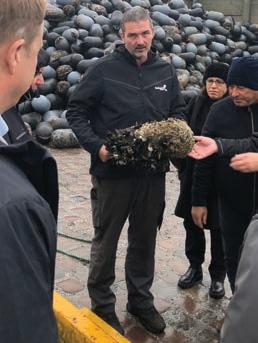
of dredging. Effects could be seen on some indicators for bottom fauna such as biomass, but they were ambiguous. Nor was there an explicit impact of dredging on the Water Framework Directive bottom fauna indicator DKI (Danish Quality Index). This is not to say that dredging has no effect, but that estimating the effect is complicated by other stress factors such as the flow of nutrients into the Limfjord and their impacts. In general, dredges impact the seabed more
than other gears, but because the distances dredged when fishing for mussels are short, mussel dredging is considered relatively less harmful than when dredging for other species. Dredging and washing the shellfish both increase the turbidity of the water due to the suspension of sand particles, but DTU Aqua estimates that this effect is inconsequential in the Limfjord. Another issue facing parts of the Limfjord is eutrophication, which is caused by nutrients leaching into the
water from land and increasing plant and algae growth. This in turn leads to low-oxygen conditions in the water when they die and decompose. Mussel fishing has little impact on low-oxygen levels as the worst period is in July and August when mussel fishing is prohibited. According to DTU Aqua, dredging’s release of nutrients from the seabed that can contribute to plankton growth and thus to hypoxic conditions is limited and transient. In fact, dredging can reduce the threat of hypoxia by removing mussels that would otherwise contribute to it.
Producing mussels in Denmark is positive for the environment if the alternative is to import mussels from Latin America or even from other European countries, Mr Christensen points out. In the Limfjord operations there is virtually no transport as the Vilsund Blue processing factory is so close to the fishing grounds. The fishing trips are short, so diesel consumption is low—in fact a proposed new tax on diesel (later withdrawn) would have had almost no impact on mussel fishers because they use little fuel. The company makes use of the entire mussel, and even the water used to cook the shellfish is used as a source of nutrients and tastes, so there is no waste. The empty shells have different uses; cockles are crushed and used as filters to purify air, while mussels are used in building materials and in horse tracks, among other applications. The small amount of marine snails and other organisms that the company receives are also utilised either for biogas or by a Norwegian partner to extract nutrients for animal feed. We have a really good story to tell with so many positive aspects,
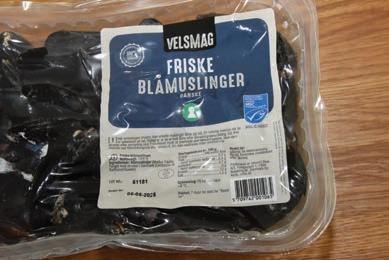
but it is completely torpedoed by this discussion on the impacts of dredging, says Mr Christensen with some irritation. Mussel fishers would be the last to damage the environment in the Limfjord, points out Henrik Nielsen from Foreningen Muslingeerhvervet, as it would ultimately affect their business. They already go the extra mile by, for example, fishing only nine months in the year and taking only 15 tonnes per week instead of the 45 tonnes their licences permit, he adds.
The mussel fishing season usually runs from October to June, with the three remaining months being used to carry out maintenance work and to send staff on vacation. However, last season the fishing only started at the end of February instead of the preceding October making it a very expensive year for the company. The threat from Latin America affects mussel
producers across Europe, but some of them have interests in the Latin American industry and thus benefit from exports to Europe. Moreover, mussels from some European producers, such as the Dutch, have a very high meat-toshell ratio and are less affected by imported mussels. These differences mean that some producers, like Vilsund Blue, are more vulnerable than others to the threat of substitution from imported mussels. Finally, the war in Ukraine
has diverted mussels destined for markets there and in Russia to other markets in Europe, so we’ve been hit by a perfect storm of events in the last couple of years, Mr Christensen declares. While he agrees measures to preserve the Limfjord are also in the company’s interest, he finds that the debate has become more emotional than factual, which could have unfortunate consequences not only for the industry but perhaps for the Limfjord as well.
Tel.:
CEO: Poul Kærgaard COO: Jan Christensen
Activities: Mussel processing
Product forms: Fresh in MAP trays, nets, jute bags; canned and in jars with different flavours; soups in jars; IQF mussels; IQF cockles
Employees: 70
Factories: 3
Certifications: MSC, BRC, IFS, Danish national organic Markets: Denmark, EU
Since Donald Trump’s inauguration as the 47th President of the United States on 20 January 2025, the world has become much more turbulent. Hardly a day goes by without a new idea, announcement, or threat taking us by surprise. Positions once considered secure are being abandoned at a moment’s notice, giving the impression that not everything has been carefully thought through and planned. This is particularly true of the ‘punitive tariffs’ that Trump is so fond of imposing.
On the afternoon of 3 March, the period of uncertainty came to an end when US President Donald Trump announced that the 25 import tariffs on Mexico and Canada, which had been threatened a few weeks earlier, would come into force from the morning of the following day. The US has thus effectively nullified the USMCA (United States-Mexico-Canada Agreement), one of the largest free trade agreements in the world. The reason given for this consequential step was the allegedly inadequate engagement of both neighbouring countries in the fight against illegal migration and drug trafficking. The main issue here is the synthetic opioid fentanyl, which is legally used for medical purposes but has become a widely abused drug in the US. In a post on Trump’s Truth Social platform, the President wrote that the tariffs were imposed ‘because of the threat of illegal aliens and deadly drugs killing our citizens, including fentanyl’. According to the US Drug Enforcement Administration (DEA), more than 70,000 Americans died from fentanyl abuse in 2023. The danger is real, but the question arises as to whether this argument for the introduction of the ‘punitive tariffs’ is merely a pretext, as they are unlikely to have any real impact on curbing drug use. Trump’s executive order is entitled “Imposing Duties to Address the Flow of Illicit Drugs Across Our

A large proportion of the frozen hake fillets that discounters in the US sell as ‘big packs’ are produced in the Canadian province of British Columbia.
Northern Border”, which suggests that drug smuggling from Canada is a serious threat to the US. In reality, however, the quantities smuggled from there are likely to be relatively small. According to its own figures, US Customs and Border Protection seized only 19.5 kilograms of fentanyl at the northern border in 2024.
The real motive for the tariffs is likely to be the protectionist strengthening of the US economy, because America will only be ‘great again’ if the average American can feel the benefits in their daily life. Again, the question arises as
to whether the introduction of additional tariffs, which severely disrupt established and proven global supply chains, is an appropriate means to this end. It is no secret that Trump and some of his advisers dislike the US trade deficit, which has accumulated over the years. In 2024, the deficit rose by 17 to a staggering $918.4 billion compared to 2023. Although US exports increased by 3.9 to $3,191.6 billion, imports rose even more sharply, by 6.6 to $4,110 billion. The largest trade deficits were recorded with China ($295.4 billion), the EU ($235.6 billion), Mexico ($171.8 billion), and Vietnam
($123.5 billion). For Trump, import tariffs are an effective way of reducing the US trade deficit and—even better—of encouraging foreign companies to relocate their production to the US. That is why the 47th President of the United States and self-proclaimed ‘dealmaker’ has rigorously enforced his tariff ideas—despite all protests and warnings of possible economic consequences. Many US voters were swayed by Trump’s promises to significantly reduce food prices. With these tariffs, Trump is now fulfilling one of his campaign promises. In doing so, he is even willing to accept the risk that
the cost of living will rise rather than fall. The Peterson Institute for International Economics conducted a study in 2024, estimating that additional tariffs will result in extra costs of $2,600 per year for each US consumer. Furthermore, import tariffs could further drive inflation in the US.
China was the first to be hit, along with the US neighbours Canada and Mexico. In the period between the announcement of the tariffs and their imposition, negotiators tried in vain to persuade Trump to change his mind and avert the impending disaster. This was an almost impossible task, as the American side did not specify exactly what it expected in return for waiving the punitive tariffs. To deter migrants and drug couriers, Mexico extradited several dozen drug traffickers to the US and deployed more National Guard officers to the border. Canada invested in border security and appointed a commissioner to coordinate the fight against drug trafficking. The US administration was expected to take these efforts into account. On the eve of the imposition of tariffs, Mexico’s President Claudia Sheinbaum said they would wait calmly, “restrain their temper, be serious, and have patience”.
After talks with the heads of state, US President Trump agreed to postpone the punitive tariffs for a month, but on 4 March 2025, the threat was actually carried out. This is a far-reaching decision, as the US is Canada’s and Mexico’s most important trading partner. As a result, tariffs could push both economies into recession. Accordingly, Canadian Prime Minister Justin Trudeau strongly condemned Trump’s tariffs, calling them an economic attack on his country’s

Trump’s tariffs would hit the Canadian fishing industry hard, but they would also have consequences for US consumers.
sovereignty that would not be accepted without resistance. Canada, in turn, imposed tariffs on US goods worth $155 billion. Trudeau called on Canadian citizens to respond by buying more domestic products. Mexico’s President Claudia Sheinbaum also ordered retaliatory tariffs against the US. At the same time, she strongly rejected Trump’s claim that the Mexican government had allied itself with criminal organisations. However, it is still unclear which countermeasures Mexico will adopt against US tariffs. Sheinbaum merely stated that the country was prepared and had appropriate plans.
Just three days after the tariffs were imposed, however, US President Trump backtracked again in the trade dispute with Canada and Mexico, partially suspending the tariffs for goods from both neighbouring countries—at least for the time being. Until 2 April, no punitive tariffs will apply to any imports covered by the North American Free Trade Agreement
USMCA. The US administration’s erratic decisions are unsettling global markets and disrupting international trade relations.
According to Seafood Source, higher import tariffs on goods from Canada, Mexico, and China would affect fish and seafood products worth over €5.3 billion. The additional costs for US seafood importers would amount to €1.12 billion. The US trade deficit, which Trump has frequently criticised, is particularly severe in the fish and seafood sector, as nearly 80 of the seafood consumed in the country is imported. That is why many of those affected within the US itself are hoping that cooler heads will prevail and action will be taken as soon as possible, because tariffs do more harm than good.
So, will tariffs be imposed or not? It is already apparent that the
tariff dispute is disrupting the decades-old seafood trade structure between Canada and the US. Higher tariffs stall the engine of cross-border trade that benefits both countries. The impending chaos in the supply chains for salmon, lobster, snow crab, and many other products would lead to job losses, rising costs, and higher prices for consumers. In 2023, Canada imported a total of $3.4 billion worth of fish and seafood, with almost a third coming from the United States. In return, the United States imported over $3.6 billion worth of seafood from Canada, making Canada its largest supplier. The fishing industries of the two neighbouring countries are closely intertwined. For example, Trump’s tariffs would hit Canada’s lobster fishery hard, with 55 of its frozen and processed lobster exports going to the US. The Nova Scotia Seafood Alliance warns that well over 40 of the province’s wildcaught fish is shipped to trading partners in the south. The export of snow crab, the most valuable catch
in Newfoundland and Labrador, is also at stake. 96 of the province’s crab exports, which generate more than $500 million annually, go to the US. Tariffs have the potential to slow down fishing and devastate coastal communities. This would not only affect the seafood industry, but also peripheral economic sectors, from freight forwarders and petrol stations to grocery stores, service providers, and many other industries. The Pacific province of British Columbia, which shipped fish and seafood worth $510 million to the United States in 2023, would also suffer significant damage.
At the same time, Trump’s threat to impose tariffs is already seen by Canada’s seafood industry as a ‘wake-up call’ to free itself from its one-sided dependence, diversify, and enter new markets. Initial reports indicate a particular focus on China, Europe, South Korea, and the Middle East. This reorientation may already be evident at the next seafood trade fair in Barcelona.
Compared to the tariffs against Mexico and Canada, the increase in tariffs for Chinese products as part of Trump’s controversial trade strategy seems almost ‘mild’. They will be doubled from 10 to 20 as of 4 March. It may not sound like much, but it is still significant, considering that the US imports more than $450 billion worth of products from China every year. The think tank Tax Foundation estimates that this increase in tariffs alone would mean an additional financial burden of $172 per US household. As expected, China is not accepting Trump’s decision on tariffs without a fight and has announced countermeasures. Beijing’s Ministry of Commerce stated that China will impose additional tariffs of 15 on chicken, wheat, corn, and cotton
from the US from 10 March. Other agricultural products, including soybeans, pork, and beef, will be subject to an additional 10 tariff. This is strongly reminiscent of the previous trade war between China and the US, which Trump initiated with tariffs in 2018 during his first term in office. At the time, the escalating conflict cost US seafood importers at least $350 million, with different industries affected to varying degrees. For example, Maine’s lobster industry suffered an 84 decline in exports to China in 2019.
It is in the nature of such deliberately provoked trade conflicts that even the instigator rarely escapes unscathed. Of course, US President Donald Trump is well aware of this, yet he claims that these measures will usher in ‘America’s golden age’. Some negative effects of tariffs are unavoidable for the American people, but he insists that, in the end, it will all be worthwhile. Whether this promise will be fulfilled remains open to doubt. Tariffs will have to be paid by US importers, further increasing the risk of inflation and forcing the Federal Reserve to tighten monetary policy. This, in turn, will make mortgages and other loans more expensive, which will ultimately be paid by consumers. The investment climate in the economy could suffer. The US stock market has already reacted negatively to the White House’s tariff threats. The leading US index, the S&P 500, lost 1.8 of its value over the course of the day, while the technology-heavy Nasdaq suffered even greater losses.
Apparently, many investors hoped until the last moment that Trump might be bluffing. They miscalculated, as the US President remains undeterred and has already announced further tariffs
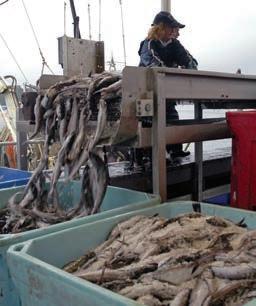
Current developments in the global seafood industry are seen as a wake-up call in Canada and have increased pressure to diversify export markets..
on agricultural imports, which are expected to take effect from 2 April. Without providing further details, Trump has called on US farmers to boost production for the domestic market as a precaution.
The European Commission views Trump’s trade policy as a step in the wrong direction and continues to advocate for an open and predictable global trading system that benefits all stakeholders. At the same time, it refutes Trump’s claim that the EU was founded to ‘screw’ the United States. Contrary to Trump’s accusation that the EU benefits unilaterally from the trade relationship, the trade balance between the two partners is fairly even. The US President’s statement is based solely on bilateral trade in goods and fails to consider the value of bilateral trade in services. There is indeed a gap in goods
trade. In 2023, the EU exported €503 billion worth of goods to the US, compared to €347 billion in imports from the US to Europe. This resulted in a €157 billion trade surplus in goods for the EU. However, Trump ignores the EU’s deficit in bilateral trade in services with the US. In 2023, the EU exported €319 billion worth of services to the US, compared to €427 billion in imports from the US to Europe. This resulted in a €109 billion trade deficit for the EU in services. Taking both goods and services into account, the EU has a small surplus of €48 billion with the US, which is just 3 of the total trade between the two economies (€1.6 trillion). Our economies are therefore highly complementary. In addition, EU and US companies are significant investment partners. In 2022 alone, reciprocal investments amounted to €5.3 trillion.
Whether such arguments will convince the US President and dissuade him from imposing tariffs remains questionable. It seems that tariffs on cars, steel, and aluminium were decided long ago. This makes it all the more important to avoid them in the agricultural sector, where the EU also has close trade relations with the US. Of course, this also applies to fish and seafood. Higher US tariffs on fish and seafood products from the EU would affect shipments worth $1.4 billion. These include salmon, squid, fresh sea bass and sea bream, as well as cod fillets. On the other hand, the EU is also an important market for US seafood products, with Germany playing a particularly significant role. According to the USDA Foreign Agricultural Service, Germany is the largest fish and seafood market in Europe for US exporters. Imports of Alaska pollock play a particularly
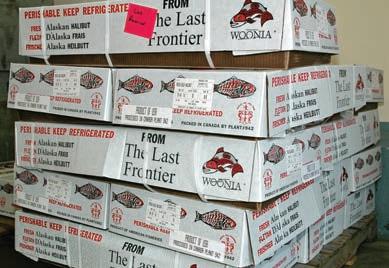
Even premium fish products, such as Pacific white halibut fletches, would become significantly more expensive in the US retail market.
prominent role, but salmon, cod, live lobsters, and spiny dogfish are also in high demand. Interventions
in these well-established trade relations, such as Trump’s threat of punitive tariffs, would severely
disrupt this balanced system and have negative consequences for both sides. Manfred Klinkhardt
Tariffs are divided into export and import duties. Export duties are imposed on goods if a country wants to discourage or prevent their export. In this case, the seller normally pays the export duties when exporting the goods.
The import duties ( ad valorem duties) that Donald Trump wants to impose on imported goods are calculated based on the value of the goods and are usually paid by the domestic importer to US Customs and Border Protection. Trump intends to impose import duties on both complete goods and their components and parts. This could also harm US companies that supply parts to foreign manufacturers. For example, if a car is assembled abroad using parts from the US, import duties will still apply when it is imported back into the US. They must be paid to the government by the person or company importing the goods. Thus, import duties act like taxes, making imported goods more expensive depending on the amount of the duty. Many importers pass these additional costs on to consumers, either partially or in full. Import duties are said to protect domestic producers of comparable goods from unwanted competition in the domestic market and stimulate the economy. Additionally, they provide the government with extra revenue.
Internationally, tariffs on fish and seafood tend to be higher than those on industrial goods. In some countries, they can reach up to 30% of the value of the goods. The World Trade Organisation (WTO) states an average value of 14% for seafood. With more than half of the world’s seafood exports coming from developing countries, the WTO aims to keep tariffs as low as possible to support these economies. To achieve this, some buyers, such as the European Union or Japan, grant so-called preferential tariffs, which are lower than the ‘normal tariff’ on goods when imported from other countries.
Tariffs have both advantages and disadvantages. Acting as additional taxes, they raise the prices of affected goods or services. This can lead to supply bottlenecks if they discourage supplier countries from exporting essential goods. High tariffs complicate economic relations, distort markets, and can even escalate into full-blown trade wars. In light of these risks, billionaire investor Warren Buffett has strongly criticised Donald Trump’s trade tariffs, calling them ‘an act of war’ in general.

Over the last quarter century the cultivation of cod in Norway has been a roller coaster ride for producers and customers alike. A new wave of companies is optimistic about cultured cod’s prospects this time.
The rst attempts at rearing cod in captivity in Norway date back to the 1880s when larvae were produced for restocking purposes. A hundred years later cod fry were produced for aquaculture purposes, but the industry never took o due to biological, technological, and commercial challenges. In the early 2000s, companies, possibly inspired by the spread of salmon farming, invested in cod cultivation as a way of liberating the market for this iconic species from the uctuations of landings from capture sheries. Production grew rapidly until about 2010 when the industry collapsed as production costs soared due to high mortalities and escapes, disease issues, an unfavourable feed conversion ratio, and the precocious onset of maturity that reduced growth rates, according to Ingrid Pettersen and coauthors in a 2023 paper.
Farmed production offers several advantages over wild catch
e global economic crisis of 2008 and increase in catches of wild cod also played a role in the collapse. e failure of cod farming gave rise to capture-based aquaculture, where wild cod were caught, transferred to net pens, and fed until the sh reached the desired size when they were harvested. e advantage of farming as well as of capture-based aquaculture is yearround production as opposed to the seasonal catches of capture sheries. Farmed or fattened
sh can thus be released on the market when the lack of wild sh pushes up prices. Moreover, farming sh enables closer control of the supply chain and better production planning. It avoids some of the quality-reducing handling associated with capture sheries and o ers regular deliveries of a uniform product, factors that are important for retail chains.
ese are among the reasons that prompted Ola Kvalheim together with two partners to found Ode, a cod farming company, ve years ago. e initiative combined an educational background and career in nance with his roots in a shing family operating from Ålesund which is also where Ode is based. In the decade since Norway’s second attempt at cultivating cod fell through, signi cant progress has been made in better understanding cod biology as well as in production technologies. Cod spawning techniques bene ted from the photoperiodic manipulation of broodstock which enabled the year-round production of eggs. e nutritional needs of cod larvae have also been studied to understand the role of enrichment of both live and formulated feeds. Moreover, research into rearing conditions such as water temperature and currents, and into nutritional de ciencies and their interaction with gene expression have reduced the incidence and intensity of deformities in juveniles, according to a 2021 paper by George Nardi and colleagues.

For on-growing cod, feeds with a high protein and low fat content were developed to prevent the development of fatty liver, the organ that stores excess dietary fat in cod—unlike salmonids and small pelagics which store it in the muscle tissue. Other developments include escape-resistant cages and vaccines against some of the diseases that a ect cod. As a result, today’s generations of farmed cod are stronger, healthier, and domesticated, says Ørjan Nergaard, the head of the Cod Cluster, a national network of about 100 companies involved in the cod value chain.
Today two hatcheries, both members of the Cod Cluster, one operated by the Norwegian
Institute of Food, Fisheries and Aquaculture Research (NOFIMA) near Tromsø and the other a privately-owned company, produce cod fry for the industry. e sh are selected for various desirable traits such as disease resistance, rapid growth, and delayed sexual maturity and Ode as well as other cod farmers are among the hatcheries’ clients. e vision for Ode is to build a fully integrated value chain, encompassing hatchery, grow out, farming, slaughter, processing, sales, and marketing, that the company controls itself. is chain had to be built from scratch as it didn’t exist, says Mr Kvalheim, and over the last ve years the company has succeeded in doing this. Regular weekly harvests commenced in the spring of 2023 and the company has been supplying retail
customers in Europe and the US. e production cycle starts with the hatching of the eggs which happens three times a year, once naturally and twice induced by manipulating the photoperiod and the temperature. After about seventy- ve days the larvae are transferred from the hatchery to the nursery where they spend the next six to nine months depending on how big they are supposed to grow in land-based facilities. Companies have different strategies in this regard and at Ode they tend to keep the sh a little longer to enable them to reach 200-300 g. e sh are vaccinated against, for example, vibriosis before they are transferred to sea cages where they spend the next 18 months during which time they reach 3-4 kg. From the time they are harvested the sh have a shelf life of about 16 days. Shipping to markets in Europe takes four to six days as does airfreighting them to customers in Asia or the US.
Cod farmers have much to learn from the farmed
The cod industry has the advantage of following in the footsteps

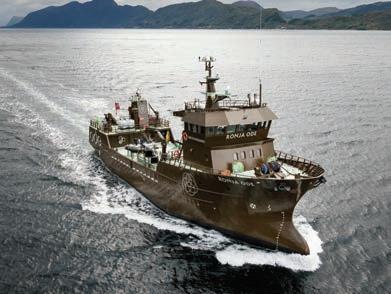
of a highly successful salmon cultivation sector from which it can cherry pick the best and leave the rest, whether it is related to fish health, farm management, feed conservation, or more efficient production. On the other hand, regulatory authorities have also
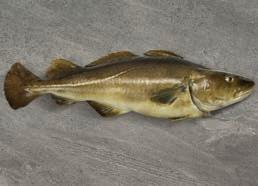
learned from the salmon sector so cod farmers seeking new sites must provide rigorous environmental impact studies and risk assessments which tends to slow development and frustrate the farmers. However, because cod farming is still at the stage where it is spending on infrastructure and growing biomass, and investing in product development and marketing etc., its economic viability is not yet proven. This in turn means that demand for cod farming sites is low and prices are modest compared to salmon farming sites. Today, says Mr Kvalheim, there are four active farmers with production operations, and a handful of others with licences who have adopted a wait-and-see approach. Among the risks are the impacts of climate change such as warming water which can affect the fish causing more stress, slower growth, and
increased vulnerability to disease. Last year saw an unseasonably warm couple of months in the summer with water temperatures above the usual range even in the northern part of the country. Cod have a preferred range of roughly 4 to 14 degrees so at Ode the traditional surface cages are equipped with a net that extends down to 40 m allowing the fish to remain at their optimal temperature irrespective of the temperature at the surface. This year the company plans to introduce fully submersible cages that can be suspended 40 to 80 m below the surface. As the fjords in this part of Norway are 400-700 m deep there is plenty of scope to lower the nets even further if necessary. This solution is another example of a collateral benefit from the salmon sector as these sinkable cages were originally developed to avoid salmon lice.

Convenience and simplicity drive product development
But successfully growing sh is only part of the equation, it then must be marketed and sold. Here too Ode has taken a leaf from the salmon book and is looking at products such as sushi, or poke bowls, which are arguably the ultimate in convenience foods. Salads, sandwiches, and lightly smoked cod are some of the other products that Ode considers have
Ystenesgata 6b 6003 Ålesund Norway
Tel.: +47 7023 9009 post@ode.no ode.no
potential. But the focus has also been on ways to quickly prepare fresh portions for busy consumers living in one or two person households with small kitchens in cities. e company’s customers are the retail chains and the Horeca sector and Mr Kvalheim sees Ode’s 12-person strong sales team helping them create successful products, so they allocate more space on their shelves and their menus to this sh. Consumers stand to bene t from a larger variety of cod products—and so will Ode.
CEO: Ola Kvalheim
Activity: Cod farming, processing, sales, marketing
Volumes: 13,000 tonnes/year
Employees: 200
Markets: Europe, Asia, USA
Customers: Retail chains, Horeca
The Cod Cluster was formed to foster cooperation between the different actors while creating economic activity in the coastal towns and villages that depend on the sea for their well-being. While cod farming is currently a relatively modest activity in terms of output, Mr Nergaard feels that volumes are going to increase rapidly in the years to come leading to more year-round employment, a development that will benefit coastal communities. He emphasises that the cluster is about working together whether one represents the culture or the capture sector and his work includes persuading the cod fishers that the famers are not their rivals. Open communication and transparency is also something that the cluster focuses on having learned from the salmon sector that anything else is counterproductive. And it works closely with the administration and the research establishment to devise solutions to challenges such as escapes and possible genetic mixing with wild stocks. Despite these issues the world needs healthful and sustainable protein, Mr Nergaard argues, and Norway is good at cultivating fish so any calls to stop farming are completely misplaced.
Using technology to improve the value of summer cod in Western Greenland
Royal Greenland catches and processes fish and seafood from the North Atlantic for delivery to customers in Europe, Asia, and North America. The company has developed an innovative method to add value to summer cod by changing the way it is caught and handled.
If you were faced with the challenge of turning a low value sh into a high value product, how would you go about it? At Royal Greenland they answered this question through a new concept that fundamentally changes the way summer cod (Gadus morhua) is shed and handled in Greenland to turn them into high value llets for the global
market. At the heart of this change lies innovative technologies such as fjord cages and a custom-built wellboat being applied at scale.
The concept of Nutaaq cod
e Nutaaq cod concept has been 10 years in the making and
centres around increasing the value of the summer cod shery in Western Greenland. Summer cod in Greenland is perceived as a low value product due to its high feeding in a short time, which has a negative impact on the rmness, visual appeal, and taste of the cod llets. is impacted the sale of bulk quantities of llets as
buyers would often choose other suppliers’ products.
At the heart of the concept is a fasting period where the cod is kept in cages for a minimum of 14 days and up to 4-6 weeks allowing the sh to digest the eaten food, which improves the rmness, visual appeal, and taste
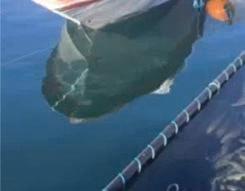
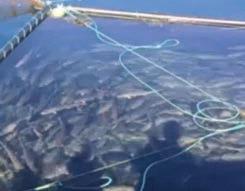

Greenland owns 200 cages and access to a further 100 privately held cages. All the cages are fabricated to the same specifications to ensure the fish are all treated uniformly.
of the sh. e sh is caught by local Greenlandic shers using pound nets in the fjords of western Greenland. e shers then translocate the cod into the fjord cage for fasting. During the translocation and fasting period, great care is taken to ensure that the cod is handled gently and monitored regularly to ensure its wellbeing. is focus on wellbeing has resulted in an overall mortality rate of less than 4 from capture to lleting.
After the fasting period, the sh is transported from the cages in the fjords with a well-boat to one of two larger holding pens next to the processing facility in Maniitsoq. e sh are kept in the holding pens to de-stress for one to two days, before being pumped into the facility, stunned with electricity, and then immediately headed and gutted. As of 2024, 9,972 tonnes of Nutaaq-compliant individuals have been processed into 1,200 tons of Nutaaq llets and 4,000 tons of Nutaaq H&G products.
ese value-adding procedures ensure a bloodless llet that is highly sought after in the HORECA1 sector that sells it for a premium. is has also meant that the price for a Nutaaq cod llet is on par with other fresh ocean cut llets.
So, what are the new technologies that enabled the Nutaaq llets in the rst place?
e main new technology that Royal Greenland and private shers had to adapt to, were the cages that are now found in the Greenlandic fjords for holding the cod. e mesh that constitutes the cage is specially built to integrate seamlessly with the traditional Greenlandic pound net shery, by having one-way openings near the water line for the cod to swim through as the pound net is raised to the surface. is design ensures that the sh remain in the water during the entire transfer process, which eases handling for the shers, making
it more appealing for them to opt into the Nutaaq concept. Furthermore, it reduces any damage to the cod to near zero, which also has a positive impact on the mortality rate. e cage mesh is equipped with pingers, an acoustic deterrent device, that protects the cod from natural predators such as seals, and the cages from damage from larger mammals such as whales.
e design and placement of the cage must also consider one of the major challenges during the shing season, which is the presence of meltwater from inland snow and ice. is is vital for the wellbeing of the cods during the fasting period, because when the meltwater mixes with fjord water that has a low owthrough of ocean water, it creates unfavourable water quality conditions for the cods in the cage. is can lead to a higher mortality rate unless designed against. e cages are therefore dimensioned at 6 m by 6 m by 6 m or 216 m3, which o ers the sh enough space to distance themselves from each other—about 10.6 litres of water
per kg of cod at the maximum 20 tonne cage capacity. is upper capacity limit is set based on animal welfare considerations and to ensure the high quality of the raw material. is dimensioning also allows for optimal placement of the cages, as they can be rmly anchored to the fjords seabed in the currents of the fjord systems. is enables a better owthrough of fresh ocean water which keeps the water quality at the level necessary to ensure the survival of the cod during the fasting period.
ese specially designed cages can t into a 20-foot container for ease of transportation. Using them enabled Royal Greenland to reduce the mortality of the sh during the fasting periods. is has had a positive impact on the pro tability of summer cod, as more live sh have become available for processing to Nutaaq llets at Maniitsoq.
In total Royal Greenland presides over 200 cages and has access to another 100 privately owned cages that are made to the same
speci cations to ensure uniform holding conditions and mooring/handling when the well-boat comes to pick up the cod. e cages are leased out to private shers who then catch and transfer the cods to the cages, before informing Royal Greenland of the location, time of transfer and quantity in the cage. is information is gathered in a central database that allows Royal Greenland to plan and plot the logistic operation of gathering the cods for translocation to the nal holdings pens in Maniitsoq.
e translocation is done by Royal Greenland with the retro tted Tuneq well-boat that has a holding capacity of 120 tons divided over eight tanks. e well-boat comes installed with automatic graders and sorter systems to ensure only compliant cod are translocated. Undersized sh are released alive back into the ocean. Compliant cod are led into the well-boat and distributed over the eight tanks. is is an important step in the handling because it ensures that the water in each holding tank remains oxygenated at levels that mimic natural conditions to reduce the onset of stress or mortality.
Maintaining adequate levels of oxygen was one of the main challenges observed during the rst years of operation, as the cod in the well-boat’s holding tanks would on occasion perish from a lack of oxygen. is led Royal Greenland to change the way sorting is conducted, to ensure that the water in the holding tanks remains well oxygenated throughout the translocation process. In practice this means that a maximum two tonnes of sh are led into tank number one if the water remains well oxygenated. Once the maximum is reached the in ow to tank one is then diverted to tank four if the oxygen sensors in tanks two and three report too low oxygen levels to take in more sh.










is process repeats until the cage is emptied of sh.
Addressing this challenge had the bene t of ensuring that more cods were delivered to the holding pens in Maniitsoq for further processing into Nutaaq llets. Dead cod still in good condition, could only be processed into general H&G products, that fetch a lower price than the Nutaaq llets. Ensuring the reduction in the loss of live cod during translocation, therefore remains an imperative for Royal Greenland as improved conditions in the translocation process have had an overall positive impact on the pro t margins on the summer cods.
Overcoming these challenges associated with the process and thus improving the nal llet product has resulted in several bene ts for Royal Greenland:
• Turning low value summer cod into a high value cod llet that is on par with ocean cut llets and in demand by the HORECA sector.



• Lower the mortality rates associated with cod harvesting and thus achieving lower protein loss.
• Financial ability to o er higher prices to the shermen for Nutaaq-compliant cod compared to conventionally caught cod.
• Consolidation of the cod shery in Western Greenland to achieve economies of scale and enable future sidestream utilisation options for economies of scope.
e potential to achieve greater side-stream utilisation options once critical mass has been allocated to Maniitsoq, is a prospect that is of great interest for Royal Greenland moving forward. Here the knowledge and the many good examples from the 100 cod utilisation in neighbouring Iceland, are a great source of inspiration that Royal Greenland intends to follow.
While the technology behind the Nutaaq cod concept is already
in place, technological development hasn’t stopped. To increase transparency with the shers and to assist scientists in stock assessment, automatic counters have been installed on the well-boat to count the number of cod that are being let back into the ocean. is is intended to increase transparency and fairness regarding the number of viable cods the shers can be paid for and provide valuable information for the yearly stock assessment by providing scientists with the exact number and biomass that was released back into the ocean.
Lastly, the installation and trial of scanners at the Maniitsoq facility that can detect internal blood spots in the H&G cod products prior to freezing. Being able to detect blood spots through sh skin would greatly improve the processing e ciency of the Nutaaq production as sh that are not up to the Nutaaq standards of a spotless llet or H&G product are separated out automatically instead of manually, during the lleting process.
Søren E. Schrøder, Euro sh, soren@euro sh.dk


17-19 June 2025
Seagriculture Rotterdam, Netherlands info@dlg-benelux.com https://seagriculture.eu
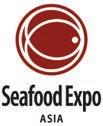
10-12 September 2025
Seafood Expo Asia
7-9 October 2025
Conxemar * Vigo, Spain conxemar@conxemar.com https://www.conxemar.com/en/exhibition/
25-27 June 2025
Aquaculture Philippines Pasay City, Philippines jessa.gonowan@informa.com https://www.livestockphilippines.com/aquaculturephilippines/
Singapore Tel.: +1 207 8425504 sales-asia@seafoodexpo.com www.seafoodexpo.com
11-12 September 2025
XII Anfaco World Tuna Conference Vigo, Spain tunaconference@anfaco.es https://tunavigo.anfaco.es
5-7 November 2025
Busan International Fisheries Expo Busan, Republic of Korea bisfe@bexco.co.kr https://bisfe.com/eng/
19-21 August 2025
Aqua Nor Trondheim, Norway post@nor-fishing.no https://aquanor.no/

22-25 September 2025
Aquaculture Europe * Valencia, Spain eas@aquaeas.eu https://www.aquaeas.org/
20-22 August 2025
The 27th Japan International Seafood & Technology Expo Tokyo, Japan sf@exhibitiontech.com https://seafoodshow-japan.com/tokyo/

7-9 October 2025
2-4 September 2025
Global Shrimp Forum Utrecht, The Netherlands secretariat@shrimp-forum.com https://www.shrimp-forum.com/
DanFish International * Aalborg, Denmark
Tel.: +45 9935 5555 info@akkc.dk https://danfish.com
10-13 November 2025
World Aquaculture India Hyderabad, Telangana, India mario@marevent.com https://was.org/Meeting/code/WAI2025















9-12 December 2025
AlgaEurope 2025 * Riga, Latvia info@dlg-benelux.com https://algaeurope.org/

* Eurofish will be attending
Publisher Euro sh International Organisation H.C. Andersens Boulevard 44-46 DK-1553 Copenhagen V Denmark
Tel.: +45 333 777 55, info@euro sh.dk euro sh.dk
Managing editor Marco Frederiksen
Editorial offices Behnan Thomas (bt) H.C. Andersens Boulevard 44-46 DK-1553 Copenhagen V Denmark
Tel.: +45 333 777 64 behnan@euro sh.dk
Dr. Manfred Klinkhardt (mk) Redaktionsbüro Delbrück Franz-Stock-Straße 23 D-33129 Delbrück Germany
Tel.: +49 5250 933416 manfred.klinkhardt@web.de
Technical layout Thomas Jensen
Advertising Euro sh Magazine H.C. Andersens Boulevard 44-46 DK-1553 Copenhagen V Denmark
Tel.: +45 31384390 adverts@euro sh.dk
Frequency 6 issues per year
Circulation 2500 copies
Subscription details
Price: EUR 100,–To subscribe send an email to info@euro sh.dk
Unless otherwise stated, the copyright for articles in this magazine is vested in the publisher. Articles may not be reproduced without written permission from the copyright holders. An electronic copy is available on request to adverts@euro sh.dk
ISSN 1868-5943
Order your free trial info@eurofish.dk





Nobbingmachines andAuto-packers forsardineandmackerel
VredenburgSouthAfrica
Mobile: +27 83 2620362
E-mail: easycancc@gmail.com Website: www.easycan.co.za ONE OF THE MAIN MANUFACTURES OF PROCESSING MACHINES FOR BIG, SMALL AND VERY SMALL PELAGIC FISH
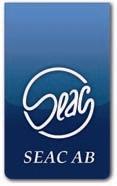
Nobbing down to 110 pcs/kg Filleting down to 100 pcs/kg Up to 450 fish pockets per min
Slånbärsv.4, SE-386 90 Öland Sweden info@seac.se WWW. SEAC.SE
Polystyrene compressors The specialist in fishbox compactors and recycling Tel. +45 97371799 runi@runi.dk www.runi.dk


